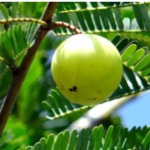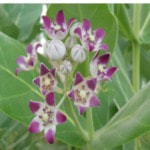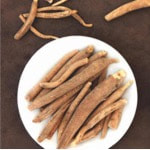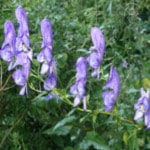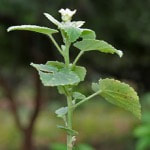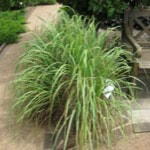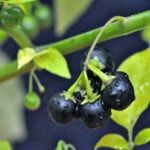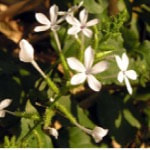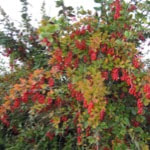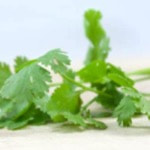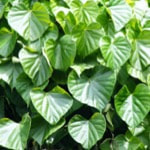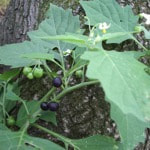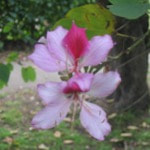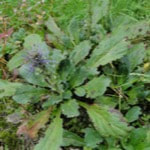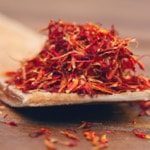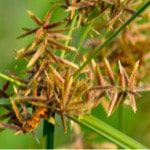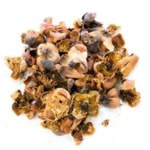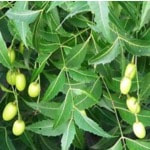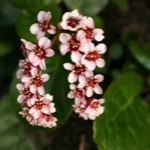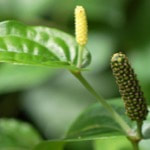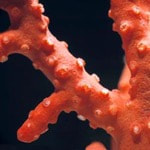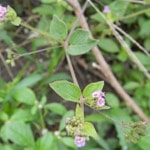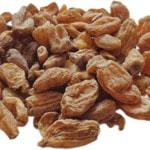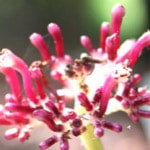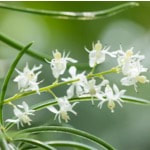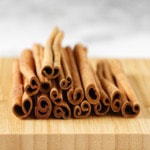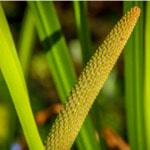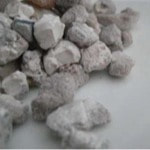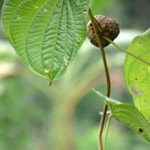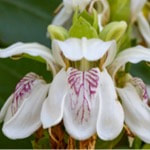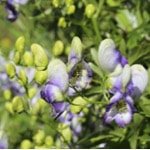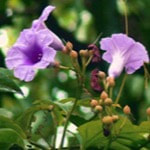Ayurveda is one of the traditional systems of medicine in India, and is a healing tradition deeply rooted in the culture, with the word Ayurveda derived from Sanskrit, meaning knowledge of life and longevity. It is also sometimes referred to as “Mother of all healing”, and has been practiced in India for at least 3,000 years, with it being first recorded in 6,000 BCE.
Since the start of human civilization, plants have played an important role. According to the World Health Organisation (WHO), about 80% of the world population currently relies on plants as the basis of traditional medicines and remedies to provide for their own primary healthcare needs.
Ayurvedic herbs are the essence of Ayurveda. Practitioners use these herbs to detoxify the body, boost immune against diseases and to keep the mind, body and spirit in balance. There are over 2,000 medicinal plants that are utilized for their effectiveness in healing illnesses, and they can be found used as infusions, teas, powders and pills.
Currently, there are more than 600 herbal formulations and 250 plant remedies included in the library of Ayurveda. Now, these herbal remedies act as an important source of information and studies for the discovery of new modern drugs due to several factors, such as the effectiveness of these medicines which has proven its healing ability over centuries, and lesser side effects in comparison with some modern medicines.
Ayurveda is widely practiced by the Indian subcontinent - with more than 90% of Indians using some form of Ayurvedic medicine according to the University of Minnesota’s Center for Spirituality & Healing. Its popularity has even spread into the Western world as a form of alternative medicine.
Ayurveda practitioners believe that every person is made up of five elements found in the universe - space, air, fire, water and earth, which combine in the human body to form three life forces or energies, called doshas (similar to the system of Yin and Yang and qi in traditional chinese medicines). These doshas control how our body works - they are Vata/Vayu dosha (space and air), Pitta dosha (fire and water) and Kapha dosha (water and earth).
Everyone has a unique combination of these three doshas, with one or sometimes, two usually stronger than the other. This unique mix is determined since birth, but changes with the movement of life. It constantly fluctuates according to several factors such as the environment, diet, weather, age etc., resulting in an imbalance which can affect one’s health, energy and mood. Each of these doshas control a different body function, and traditional practitioners believe that illnesses and symptoms developed are linked to the balance of one’s doshas.
Vata Dosha; It is believed to be the most powerful one out of all three. Controlling basic body functions, it also controls the mind, breathing, blood flow, heart function and the ability to get rid of waste through your intestines. Things that can cause disruptions to it include fear, grief or staying up too late.
Pitta Dosha; This energy controls digestion and metabolism, and other digestion related hormones. Things that can cause disruptions to it include eating sour or spicy foods. If it's your main life force, you’re believed to be more likely to develop conditions such as heart disease or high blood pressure.
Kapha Dosha; It helps control muscle growth, body strength, stability, weight and immune system. Things that can cause disruptions to it include eating too much sugar, or eating and drinking things that contain too much salt or water. If it's your main life energy, it is believed that you’re more likely to develop breathing disorders, cancer, diabetes or obesity.
The goal of Ayurvedic medicine is to take into account each individual’s primary life force and to create a harmonious balance between these three elements in ensuring optimal health.
Throughout the years, Ayurveda has evolved a lot and is now integrated into several other practices. More often than not, Ayurvedic herbs are rarely used on their own, and are often a part of a holistic approach to health, involving nutrition, yoga, massage, aromatherapy or meditation. Along with these herbs, practitioners also use therapeutic oils to treat and promote a sense of well-being.
In this page, we have researched 85 most important Ayurvedic herbs that play a significant role in herbal formulations and remedies. These ingredients are part of our collection of fragrance oils, for their therapeutic properties which combines both its calming and soothing qualities with the healing properties of these herbs.
Since the start of human civilization, plants have played an important role. According to the World Health Organisation (WHO), about 80% of the world population currently relies on plants as the basis of traditional medicines and remedies to provide for their own primary healthcare needs.
Ayurvedic herbs are the essence of Ayurveda. Practitioners use these herbs to detoxify the body, boost immune against diseases and to keep the mind, body and spirit in balance. There are over 2,000 medicinal plants that are utilized for their effectiveness in healing illnesses, and they can be found used as infusions, teas, powders and pills.
Currently, there are more than 600 herbal formulations and 250 plant remedies included in the library of Ayurveda. Now, these herbal remedies act as an important source of information and studies for the discovery of new modern drugs due to several factors, such as the effectiveness of these medicines which has proven its healing ability over centuries, and lesser side effects in comparison with some modern medicines.
Ayurveda is widely practiced by the Indian subcontinent - with more than 90% of Indians using some form of Ayurvedic medicine according to the University of Minnesota’s Center for Spirituality & Healing. Its popularity has even spread into the Western world as a form of alternative medicine.
Ayurveda practitioners believe that every person is made up of five elements found in the universe - space, air, fire, water and earth, which combine in the human body to form three life forces or energies, called doshas (similar to the system of Yin and Yang and qi in traditional chinese medicines). These doshas control how our body works - they are Vata/Vayu dosha (space and air), Pitta dosha (fire and water) and Kapha dosha (water and earth).
Everyone has a unique combination of these three doshas, with one or sometimes, two usually stronger than the other. This unique mix is determined since birth, but changes with the movement of life. It constantly fluctuates according to several factors such as the environment, diet, weather, age etc., resulting in an imbalance which can affect one’s health, energy and mood. Each of these doshas control a different body function, and traditional practitioners believe that illnesses and symptoms developed are linked to the balance of one’s doshas.
Vata Dosha; It is believed to be the most powerful one out of all three. Controlling basic body functions, it also controls the mind, breathing, blood flow, heart function and the ability to get rid of waste through your intestines. Things that can cause disruptions to it include fear, grief or staying up too late.
Pitta Dosha; This energy controls digestion and metabolism, and other digestion related hormones. Things that can cause disruptions to it include eating sour or spicy foods. If it's your main life force, you’re believed to be more likely to develop conditions such as heart disease or high blood pressure.
Kapha Dosha; It helps control muscle growth, body strength, stability, weight and immune system. Things that can cause disruptions to it include eating too much sugar, or eating and drinking things that contain too much salt or water. If it's your main life energy, it is believed that you’re more likely to develop breathing disorders, cancer, diabetes or obesity.
The goal of Ayurvedic medicine is to take into account each individual’s primary life force and to create a harmonious balance between these three elements in ensuring optimal health.
Throughout the years, Ayurveda has evolved a lot and is now integrated into several other practices. More often than not, Ayurvedic herbs are rarely used on their own, and are often a part of a holistic approach to health, involving nutrition, yoga, massage, aromatherapy or meditation. Along with these herbs, practitioners also use therapeutic oils to treat and promote a sense of well-being.
In this page, we have researched 85 most important Ayurvedic herbs that play a significant role in herbal formulations and remedies. These ingredients are part of our collection of fragrance oils, for their therapeutic properties which combines both its calming and soothing qualities with the healing properties of these herbs.
The 3rd chapter of the Gandhasara has a list aromatic glossary. This list is partial but there is meticulous structure and the extraordinary attention to detail. Gangadhara glossary is truly astounding. According to the Gangadhara there is eightfold classification of aromatic ingredients as Vargas (categories).
We stock variety of Ingredients. This page covers only the rare Indian Ayurvedic recipes. Others are detailed separately. Click to know more about rare perfume ingredients, Ayurvedic essentials, Ancient perfume & essential oil recipes, therapeutic orchids, Singaporean Orchids and your perfume making oils at scentopia
|
Akarkará
Botanical Name: Anacyclus pyrethrum DC. (Pyrethrum radix) Hindi Name: Akarakara Common Name: Pellitory; Spanish Chamomile Anacyclus pyrethrum is a perennial plant belonging to the family Asteraceae, is cultivated in many countries including Mediterranean, Arabian countries and India. In India, it is found in the Himalayas, Jammu, Kashmir and North India at an elevation of 900 m. Herbal Usage: Indian systems of medicine have used the roots of this plant for centuries in their traditional remedies. The plant is reportedly effective in treating a variety of ailments and conditions due to its medicinal properties of anti-inflammatory, tonic and a nerve stimulant. It can be used to treat paralysis, epilepsy, nerve disorders, bowel conditions, tooth problems such as toothache, sore throat and tonsils, rheumatism, diabetes. It is also used in promoting the secretion of saliva. |
|
Ádrak (Fresh Ginger) & Sonth (Dry Ginger)
Botanical Name: Zingiberis officinale roscoe. Hindi name: Ádrak/Suòóh Common Name: Fresh Ginger/Dry Ginger Zingiberis officinale (Ginger) is a flowering plant belonging to the family Zingiberaceae, whose rhizome, or root ginger, is widely used as a spice and in folk medicines. Ginger is native to Island Southeast Asia, and is one of the first spices reported to have been exported from Asia to Europe with the spice trade and were used by ancient Greeks and Romans. Herbal Usage: Ginger is known as a universal medicinal plant that has been extensively used across various traditional systems of medicines such as Chinese, Ayurvedic, Unani since centuries ago for a wide range of unrelated illnesses including arthritis, rheumatism, sprains, muscular aches and pains, just to name a few. And there’s a reason for its high medicinal value - it possesses properties of anti-tumorigenic, anti-inflammatory, anti-apoptotic, anti-hyperglycemic, anti-hyperlipidemic, antioxidant and antiemetic actions. Ginger can be consumed either fresh or dry, and often mixed with other ingredients for a more effective medicine. A handy remedy, it is good for everything. It is used to treat indigestion, colic, vomiting, spasms, stomach and bowel pains, fever, colds, coughs and asthma. Other illnesses such as delirium, sore throats, headache and diarrhea can also be remedied with this herb. It even helps in strengthening memory! |
|
Ámalakí
Botanical Name: Emblica officinalis Hindi Name: Ámla Common Name: Emblic myrobalan OR Indian Gooseberry Synonyms: Phyllanthus emblica Emblica officnalis is a deciduous tree belonging to the family Euphorbiaceae, and is native to India. Now, it is currently found growing many places including Pakistan, Uzbekistan, Sri Lanka, China and Malaysia. Herbal Usage: This ingredient has been used in Ayurvedic medicine for thousands of years, and is truly a wonderful drug with an abundance of healing properties. Today, it is still commonly used in alternative systems of medicine. It can treat a variety of ailments and conditions - such as anemia, bleeding, diabetes, gastritis, hepatitis, liver weakness, mental disorders, vertigo and constipation. This plant also helps increase red blood cell count, regulates blood sugar, strengthens teeth, aids eyesight. It is one of the highest natural sources of Vitamin C. Spiritual benefits: It is sattwic (pure) in quality - symbolic of love, longevity, and good fortune. It helps in calming and balancing emotions, while bringing a sense of comfort to children. Thus, ámalakí has another name, dhatri, meaning “mother” in Sanskrit. |
|
Amlavetasa (Rhubarb)
Latin: Rheum emodi Wall. Hindi Name: Revand-chini, Archu Common Name: Himalayan Rhubarb; Indian Rhubarb Synonyms: Rheum australe Rheum emodi is a flowering plant belonging to the family Polygonaceae. Native to India, Myanmar, Nepal, Pakistan, Bhutan and Sikkim, the plant is also found in the subalpine and alpine Himalayas at an altitude of 4,000 m (13,000-14,000 ft). It is a medicinal herb that has been used in Indian system of medicine and European system of medicine. Herbal Usage: This plant is an important medicinal herb that has been used in chinese herbal medicine since 2700 BC and its uses have now extended to modern medicines. It is also featured as an important ingredient in the formulation of some Ayurvedic medicines. Its medicinal properties include being anti-cancerous, antimicrobial, anti-ulcer as well as anti-fungal. The roots and rhizomes of this plant are particularly utilized in treating various types of cancers and other illnesses such as constipation, jaundice, headache, migraine, paralysis, asthma, liver disorders and more. One of the best purgatives, it helps protect colon tone, prevents bile, reduces weight and fats and aids indigestion. Safe for children, this herb is great for teething and nutritional balancing. |
|
Apámárga
Botanical Name: Achyranthes aspera Linn. Hindi Name: Apamara Common Name: Rough Chaff Tree, Prickly Chaff Flower Achyranthes aspera, belonging to the family Amaranthaceae, is indigenious to India and is found throughout the country. It is also distributed to tropical countries and can be found growing in many places as an introduced species. Herbal Usage: Used often in folk medicine in countries such as Australia, India and Kenya, this plant was even recorded in the 1889 book The Useful Native Plants of Australia. It is a highly reputed medicinal herb that plays an important role in almost all of the traditional systems of medicine in India. This herb has been administered for several different types of ailments and conditions. A decoction of this herb is used for stomach ache, boils, diarrhea and skin eruptions. Leaves mixed with black pepper into a paste are consumed for fevers and coughs. For topical application, leaf juice is applied onto skin for overexposure to the sun, or for healing of insect bites. In Uttar Pradesh, the plant is used as a herbal medicine especially in the cases of treating abortion, induction of labor and postpartum bleeding. The Maasai people of Kenya use the plant medicinally to ease symptoms of malaria. |
|
Arjuna
Botanical Name: Terminalia arjuna (Roxb.) Wight & Arn. Hindi Name: Arjun Common Name: Arjuna Myrobalan Terminalia arjuna is a plant belonging to the Combretaceae family. It is distributed in various parts of India, Burma, Mauritius, Sri Lanka and sub Indo-Himalayan tracts of Uttar Pradesh, Punjac, Orissa, West Bengal, mainly along riverside and ponds. Herbal Usage: This is an amazing herb that has been used in traditional medicines for heart diseases for centuries, which is why it is nicknamed “Guardian of the heart”. It is used in prevention or to aid in the recovery of any heart disorders, such as chest pain and healing of heart tissues after surgery. Other common uses for this herb includes treatment of fractures, contusions and malabsorption. Externally, it helps with ulcers, acne and skin disorders. |
|
Arka
Botanical Name: Calotropis gigantea R. Br. Hindi Name: Aka Common Name: Gigantic Swallowort; crown flower; Indian milkweed Calotropis gigantea belongs to the family Asclepiadaceae, and is native to India, China and Malaysia, and is distributed to many countries including Philippines, Thailand, Sri Lanka, Pakistan, Nepal, tropical Africa and many more. Herbal Usage: This plant is reported to have a variety of medicinal uses and has been administered as a folk medicine, both externally and internally, in India for several years. Indian practitioners have used the roots and leaves of this plant in curing asthma and shortness of breath, while the bark is used for liver and spleen diseases. It is also believed to be effective in treating other illnesses such as skin, digestive, respiratory, circulatory and neurological disorders, as well as cure fevers, nausea, vomiting and diarrhea. Leaves are used for paralysis, asthma and as pain relief. Even the flowers are utilized as a digestive tonic to promote appetite and encourage better digestion. There has even been recent studies and research done to show that this herb displays high potential as an anti-cancer agent that is demonstrated to be strongly cytotoxic against lungs, colon and liver cancers! |
|
Ashoka
Botanical Name: Saraca indica Linn. Hindi Name: A¤hoka, Anganapriya Common Name: Ashoka Tree; Asoca Saraca indica is a plant belonging to the family Fabaceae and is found throughout various regions of India. It is also often cultivated in gardens for its attractive and beautiful flowers. Herbal Usage: This plant is described as an astringent and analgesic agent - it is utilized in skin conditions such as leprosy and is recommended for use in cases of wounds, insect bites, eye diseases, neurological disorders and fevers. It is often mainly used in promoting uterus health, including healing of uterine/ovarian fibroid and tumors, colic abdominal pain and uterine prolapse. Not only that, inflammatory conditions and urinary stones can also be remedied with it. |
|
Ashwagandhá (vitality of the horse)
Botanical Name: Withania somnifera dunal (Physalis flexuosa) Hindi Name: Ashwagandh Common Name: Winter cherry; Indian Ginseng Withania somnifera Dunal is a plant belonging in the family Solanaceae. Known more commonly as Ashwagandha, it is a woody shrub or herb with various parts (berries, leaves and roots) that are often used in folk remedies. Mainly cultivated in drier regions of India, it can also be found in Nepal and China. The name, Ashwagandha, is a combination of Sanskrit words, with ashva meaning horse and gandha meaning smell, which reflects the meaning of the roots carrying a powerful horse-like odor. Phytochemistry: The main compounds found in this plant are withanolides. Some 40 withanolides, 12 alkaloids and numerous sitoindosides have been isolated. The structure of withanolides are very similar to the ginsenosides in ginseng, leading to it commonly called “Indian ginseng”. Herbal Usage: A popular medicinal with a history of 3,000 years of use in Ayurvedic and other indigneous system of medicine, it is extensively used for health, vitality, longevity and rejuvenative properties. Many herbalists have referred to this herb as Indian ginseng and utilized it similarly as a tonic to boost immune and cognitive ability. Extracts of the herb have revealed antioxidant, antihypertensive, hypoglycemic, anti-inflammatory and immunomodulatory properties which can be used in the prevention and treatment of various diseases and conditions. Such as arthritis, impotence, amnesia, anxiety, cancer, neurodegenerative amongst others. Researches have also shown its potential in treating cardiovascular diseases which could be contributed by the numerous bioactive compounds found in the plant. Other illnesses and conditions that can be healed with this herb includes weakness from illness, rheumatism, swollen glands and anemia. Its therapeutic properties extend to insomnia, improving mental clarity and relieving fatigue. It is also especially useful for women by helping to stabilize the fetus, regenerates hormones and strengthens one body that is weakened from chemotherapy. |
|
Ativißhá
Botanical Name: Aconitum Heterophyllum Wall. (A. Cordatum.) Hindi Name: Atís; Atis Common Name: Indian Atees Aconitum Heterophyllum is an indigenous medicinal plant of India, belonging to the family Ranunculaceae. The plant is found mostly in subalpine and alpine regions of the Himalayas. Herbal Usage: Known to possess therapeutic and medicinal efficacy, this plant has been used frequently in formulations of traditional indian systems of medicine since ancient times. It has reportedly been used in the treatment of urinary infections, diarrhea and inflammation. It has also been utilized as an expectorant and promoting hepatoprotective activity. Other medicinal uses include treating vomiting, edema, liver disorders, indigestion and chronic fevers. This herb is also used in other folk medicines. In Nepal, folklore doctors use its powder along with honey for cough, fever with chills and diarrhea. For stomach aches, a decoction of roots is prescribed. In Jammu and Kashmir tribal people, the tubers are used as a good appetizer for indigestion. Furthermore, this herb is administered to help patients with reproductive disorders. |
|
Bákuchí
Botanical Name: Psoralea corylifolia Linn. Hindi Name: Babchi Common Name: Babchi Seeds, Psoralea corylifolia, Bakuchi Chinese Name: bu gu zhi Psoralea originates from the Greek language, meaning ‘scabby’, referring to the small glands coating the plant. Psoralea corylifolia is a plant belonging to the family Leguminosae. It is found throughout the plains of India, including regions such as Himlayas, Oudh, Bengal, Bombay, Deccan and Karnataka. It is also widely distributed in the tropical and subtropical regions of the world, especially China and South Africa. Herbal Usage: Babchi is an important herb that is used for its great medicinal properties. It has long since been used not just in Indian traditional medicine, but also chinese traditional medicine. The seeds are kidney shaped, having a bitter taste and unpleasant odor. They contain a variety of coumarins, including psoralen, which are researched to have amazing healing properties. This herb is known for its magical effects against various skin diseases and conditions - such as leucoderma, leprosy, psoriasis (used both internally and as an external paste or ointment) and improving color of skin (including removing whitespots). Studied for its antioxidant, antimicrobial and anti-inflammatory properties, its extracted oil is also commonly used as an effective home remedy for the skin and can be used in reducing inflammatory reactions. According to Ayurveda, Babchi powder helps improve hair growth and controls dandruff with external application. Other conditions such as internal ulcers, fever, bile conditions, lower back or joints pain and breathing difficulty are also remedied with this herb. Preparation: Five grams powder twice daily before meals with some coriander and honey (to taste) or used as an external paste. |
|
Bhriigaráj
Botanical Name: Eclipta alba Hassk. or Eclipta prostrata Roxb. Hindi Name: Bhangra (meaning “ruler the hair”), Bhringraj Common Name: false daisy Eclipta alba is a species of plant in the sunflower family, belonging to the family Asteraceae. It can be found growing in moist places in warm temperate to tropical areas worldwide. It is widely distributed throughout India, Nepal, China, Thailand and Brazil. Phytochemistry: Several important phytochemical constituents have been isolated from this plant - Oleanolic acid, Ursolic acid, Apigenin and Luteolin. Oleanolic acid is known for its antidiabetic and anticancer effects, which plays a vital role in preventing many age-related diseases including cancer and neurodegeneration, as well as increasing longevity. Research has shown Ursolic acid to have antioxidant, anticancer and anti-inflammatory properties. Both oleanolic and ursolic acid have potential use in neurodegenerative disorders like Alzheimer’s disease. Apigenin is reported as a chemopreventive agent, and has antioxidant and anti-inflammatory properties, which may have a beneficial effect on cardiovascular and neurological disorders. There are also studies to evidence that this compound can inhibit cell growth and hinder the development of blood vessels to serve growing tumors. Luteolin is described to have antioxidant, anti-inflammatory and anti-allergic activities. The compound may also have cardioprotective effect, and have the ability to block the development of cancer cells. Herbal Usage: This herb is used in both Ayurveda and Unani medicines. According to Ayurveda philosophy, this plant is bitter, hot and acts as an antidote against poison or infection. The phytochemical constituents of the plant indicate that a variety of diseases are treated with the plant and its plant parts. Major uses of this herb includes treatment of gastrointestinal disorders, liver disorders, respiratory tract disorders, fever, skin disorders, enlarged spleen and cuts and wounds. This herb maintains and rejuvenates hair. When made into a hair tonic or oil, it reduces graying hair by darkening hair color, balding and improves hair loss. Used externally, it draws out poisons, reduces inflammation and swollen glands, heals minor cuts and burns and is considered to be very effective in stopping bleeding. It even aids in improving skin complexion skin disorders and has a reputation as an antiaging agent. Fresh juice of leaves are often used for increasing appetite, improving digestion and as a mild bowel regulator. It is commonly used in viral hepatitis to promote bile flow and is also taken as a general tonic to encourage greater health while enhancing memory and learning and promotes deep sleep. Other medicinal properties of this plant include being useful in treating eye diseases, bronchitis, asthma, leucoderma, anaemia, heart and skin diseases, right blindness and many other more. |
|
Balá (meaning: strength)
Botanical Name: Sida cordifolia Linn. Hindi Name: Bariar Common Name: Country Mallow; heart-leaf sida Cordifolia refers to the heart-shaped leaf which is where its common name comes from. Sida cordifolia is a perennial plant of the mallow family Malvaceae. Native to India, it grows wild along roadsides throughout the tropical and subtropical plains. It is also cultivated widely throughout the world. Herbal Usage: Bala, which means strength, plays a role in Ayurvedic medicine, other traditional medicines like Brazillian folk medicine and also used in many parts of Africa for various ailments, especially respiratory problems. All parts of the plant possess medicinal properties, especially the root. It is used extensively in both internal or external applications, to treat a variety of illnesses and conditions. It is used in the treatment of bronchial asthma, cold and flu, nasal congestion, stomatitis, headache, chills, aching joints and bones, coughs and edema. The herb has also been described to help prevent cell proliferation and encourage liver regrowth, while possessing analgesic, anti-inflammatory, hepatoprotective properties. Because of its ephedrine content, it possesses psychostimulant properties, which affects the central nervous system and the heart. Root infusion of the herb is given to treat nervous and urinary diseases and blood disorders. An oil prepared from the plant is also used to relieve pain and reduce swellings while Ghrita (a Sanskrit technical term translating to “ghee” (clarified butter), and is referred to as a liquid substance obtained from the milk of cows - after processing according to traditional preparations) helps with heart diseases. Other uses of this herb include being used in treating fever, rheumatism, weakened body, arthritis and healing tissues of chronic inflammation. Externally, it is good for nerve pain, muscle cramps, wounds and ulcers. Bala even helps in managing one’s weight by suppressing appetite while decreasing the urge to overeat. It also contains hypoglycemic (blood sugar lowering), antioxidant and hepatoprotective properties, which helps in managing blood glucose levels and protecting heart and liver cells against cell damage caused by free radicals respectively. Its antioxidant properties also assists in controlling blood pressure by preventing constriction of blood vessels. According to Ayurveda, taking Bala in powder form along with honey or milk twice daily boosts immunity due to its Rasayana (rejuvenating) properties. In another mixture with coconut oil, it hastens wound healing due to its Ropan (healing) properties and Sita (cold) nature. By massaging joints with Bala oil, relieves symptoms of rheumatism such as joint pain and swellings due to its anti-inflammatory activity. |
|
Bhút^ina (Lemon Grass)
Botanical Name: Andropogon citratus DC. (A. Shoenanthus) Hindi Name: Gandhatrana, Harí-chaha Common Name: Lemon grass Synonyms: Cymbopogon citratus L. Lemon grass is an aromatic, tropical plant of the Poaceae family, with long slender green leaves. Native to Southeast Asia, it was introduced extensively to many other tropical regions in South Asia. Now, it has been cultivated throughout tropical and subtropical regions worldwide. Herbal Usage: Lemongrass is an extremely familiar plant to everyone. It is widely used in the food, perfumery and cosmetics industry. Ever since the discovery of the medicinal and therapeutic values of this plant, the consumption of it has been part of a common practice amongst many in various countries. It can be consumed as a decoction or infusion, much like other beverages. In the Benguet province, Philippines, people there believe that lemongrass has healing properties and aid in alleviating stomach issues such as indigestion, relieving colds, fever, pain and managing arthritis. While in Nigeria and other African countries, some people believed that by consuming ethanolic decoctions made from the leaves, it helps prevent and cure a variety of diseases.Other folk remedies believed that by drinking lemongrass tea (kadha) twice a day, it helps in weight loss by detoxifying the body and improving metabolism. What makes lemongrass so popular and used in a wide range of applications worldwide, is contributed by its antibacterial, antifungal, anti-inflammatory, anti-carcinogenic, antioxidant, cardioprotective and antiseptic activities. It is also reported to be helpful in the treatment of diabetes, gastrointestinal disturbances, malaria, flu, fever and pneumonia. Its uses extend to aromatherapy and in cosmetics for soothing stress and anxiety. For external use, apply lemongrass oil in combination with other carrier oils such as olive oil or almond oil, to relieve pain, swelling, rheumatism and sprains. It can even be used as hair oil remove dandruff due to its antifungal property. |
|
Bhúámalakí
Botanical Name: Phyllanthus niruri Linn. (P. urinaria) Hindi Name: Bhúy ámalakí; Niruri Common Name: gale of the wind; stonebreaker; seed-under-leaf Phyllanthus niruri is a widespread tropical plant commonly found in coastal areas, belonging to the family Euphorbiaceae. It is indigenous to the Amazon rainforest and other tropical areas, such as Southeast Asia, India and China. Herbal Usage: This plant has a long history of use in traditional systems of medicine such as Ayurveda, Traditional Chinese Medicine and Indonesian Jamu. Used in Ayurvedic medicine for over 2000 years, it is part of traditional remedies in treating jaundice, gonorrhoea, diabetes and frequent menstruation. It is considered an important medicinal plant in Jamu (an Indonesian traditional herbal medicine) to treat various ailments due to its antiviral and hepatoprotective properties. In Malaysia, the plant is called Dukong anak, it is consumed for diarrhoea, kidney disorders, gonorrhea and coughs. Called Chanca Piedra in Spanish which translates to stone breaker, this name is derived from the plant's effectiveness as a remedy to eliminate gallstones, kidney stones and other kidney related disorders. Other illnesses and conditions remedied by this herb include edema, urogenital diseases, dysentery and influenza, just to name a few. It is also made into a poultice for ulcers, inflammations, sores, swellings, itch and other skin diseases such as bleeding gums and tonsillitis. |
|
Bibhítakí
Botanical Name: Terminalia belerica Roxb. Hindi Name: Bhaira Common Name: Beleric Myrobalan Terminalia belerica, is a deciduous tree found commonly throughout India and Southeast Asia, where it is also grown as an avenue tree. Impressively, it grows up to 60 feet in height, with a thick trunk and leaves that crowd towards the end of the branches, forming a rounded canopy. Herbal Usage: The fruit of this tree is popularized in traditional Indian Ayurvedic medicine. One of the oldest medicinal herbs in India, it has been recorded in the Charaka Samhita (an ancient Ayurvedic literature), that Bibhitaki fruits have qualities that alleviate diseases and bestow longevity, intellectual and strength. It is also an ingredient of an Ayurvedic herbal remedy triphala, which in this case is used as a treatment for digestion and liver disorders. It can be used either as a paste or consumed as in the form of decoction. This herb is heavily utilized in a variety of gastrointestinal issues - it is considered to be a restorative tonic to the bowels, while being used as a gentle laxative modulated by its astringent and antispasmodic properties, leading to a tonifying result. It is also used for detoxification or a rasayana (rejuvenative tonic) that helps with sluggishness. Not only is it good for coughs, bronchitis and eye disorders, and many have even consumed this herb as a brain tonic to improve cognitive abilities. |
|
Bilwa
Botanical Name: Aegle marmelos Corr. Hindi Name: Belaphal Common Name: Bael Fruit, Golden apple Japanese bitter orange Bael, belonging to the Rutaceae family, is native to Indian subcontinent and Southeast Asia. It grows on dry hilly areas, reaching up to 1,300 m tall in the Himalayas, Burma, Pakistan, Bangladesh, Sri Lanka, Malaysia, Java and Philippine Islands. It is considered to be a sacred tree by Hindus. Herbal Usage: All parts of the plant, including its leaves, fruits, roots and bark are used for its medicinal and therapeutic properties in Ayurveda, Siddha and other forms of alternative medicine for thousands of years. There are many studies and researches that evidenced the effectiveness of this herb, especially its fruits. Bael Fruits may be familiar to some. It is a powerhouse of health benefits - pack full of various nutrients such as protein, vitamins (vitamin A, vitamin B, vitamin C and riboflavin), calcium, potassium, fiber and good fats. These fruits even contain antioxidant, anti-inflammatory and laxative properties. Although known to act as a heart and brain tonic, Bael has also been used traditionally as a digestive herb. It can cure chronic constipation, diarrhea, indigestion, intestinal disorders and other related conditions. Containing chemical compounds such as tannins, flavonoids and coumarins, it helps in reducing inflammation. Not only that, it contains antifungal and anthelmintic (helps in destroying internal parasites) properties. Besides these abilities, research has shown that it can also help in the following various conditions: Heal ulcers: Bael when consumed as a beverage, forms a coating on the stomach mucosa and helps in healing of ulcers. Cholera (an infectious and often fatal bacterial disease of the small intestine, typically contracted from infected water supplies and causing severe vomiting and diarrhoea): Bael is a high source of tannin, which is vital in treating this disease and can be considered as a cure. Controls cholesterol level: Bael juice controls lipid profiles and triglycerides thus reduce blood cholesterol levels. Controls diabetes: Bael contains laxatives that keep blood sugar levels in control. For external use - leaf poultice is applied to cuts and wounds to curb inflammations and reduce fever and catarrh. |
|
Bola
Botanical Name: Commiphora myrrha (Nees) Engl. or Balasmodendron myrrha. Hindi Name: Bol Common Name: Myrrh Commiphora myrrha is a tree in the Burseraceae family. It is indigenours to the Arabian peninsula to Africa and distributed throughout western Indian Ocean islands. In Arabic, the word ‘murr’ translates to bitter, and it has been used throughout history as an incense and perfume. Myrrh is a gum resin made from dried tree sap. Herbal Usage: Myrrh, is a gum resin that packs an amazing punch of health benefits. Not only has Myrrh been used as incense for many centuries, it has been extensively used in Ayurveda for its medicinal values as well. It is utilized as a remedy for arthritis, asthma, bronchitis, menopausal problems, rheumatism, traumatic injuries, inflammations and gum diseases. It is also used as an antiseptic, with a tincture made from the herb being applied to inflammatory and ulcerative conditions of the throat and mouth. When infused with rose petals, it also acts as a mouthwash to help with mouth inflammations or as a gargle for swollen gums. Myrrh can be applied externally to heal wounds, stop bleeding, treat inflammation related to arthritis, boils and other skin disorders like eczema. |
|
Bráhmí
Botanical Name: Centella asiatica (L.) Hindi Name: Brahma-manduki, Mandukaparni Common Name: Gotu Kola; Indian Pennywort. Synonyms: Hydrocotyle asiatica Linn. Umbelliferae It is a herbaceous, perennial plant belonging to the family Umbelliferae (Apiaceae). It is found growing in temperate and tropical swamy areas in many tropical and subtropical countries, including parts of India, Pakistan, Sri Lanka, Madagascar, South Africa and South pacific and Eastern Europe. It can be found throughout India growing in shaded, moist areas up to an altitude of 1,800 m. Phytochemistry: It contains pentacyclic triterpenoids, including asiaticoside, brahmoside, asiuyatic acid, and brahmic acid (madecassic acid). Other constituents include centellose, centelloside, and madecassoside. Herbal Usage: Centella asiatica (CA) is a very important medicinal herb used in the Orient, with it gaining popularity in the West. This herb has been recorded in ‘Sushruta Samhita’ an ancient Indian medicinal text and is used in Ayurvedic medicine for thousands of years. It is also used by Indonesians and in China. It is known as gotu kola, which is one of the reported “miracle elixirs of life” known over 2,000 years ago. The entirety of this plant holds medicinal values and are used for different purposes. It is widely used as a blood purifier, for treating high blood pressure, for memory enhancement and promoting longevity. In traditional Ayurveda, CA is considered to be the best herb for the revitalizing brain cells and nerves, thus improving cognitive ability. On top of that, it is used for treating skin problems or disorders, and for healing wounds. Hair loss, epilepsy, fevers, nervous disorders, rheumatism and convulsions can also be remedied with it. It even helps in boosting the immune system by cleansing the body of harmful toxins and nourishing it. There are also many herbalists who have relied on this herb for its therapeutic uses especially in the treatment of emotional disorders, such as anxiety and depression. Other than being used for its medicinal values, this herb has been extensively used in culinary dishes in several ways in various countries, such as in Burmese cuisine, Sri Lanka, Indonesia, Thailand and India. |
|
B^ihatí
Botanical Name: Solanum indicum Linn. Hindi Name: Kaòþakárí, Birhatta Common Name: Indian Nightshade Common throughout India, the plant is also available in Asia, Africa and Australia. It grows mostly in warmer parts of the country up to an altitude of 1500m. Herbal Usage: This herb is used in Ayurvedic medicines by itself or in combination with other herbs. Part of the plant such as its seeds, roots, leaves and berries are utilized in treating various diseases and illnesses such as bronchitis, asthma, dry cough, rhinitis, insomnia and cardiac weakness. This plant also contains anti-inflammatory, antioxidants, antibacterials properties and even anticancer activities. The roots of the plant are often mixed with other roots to create a decoction that is good for edema, coughs, mucus and urinal disorders. |
|
Chakra Marada
Botanical Name: Cassia tora Linn. Hindi Name: Chakunda Common Name: Cassia Cassia tora Linn. grows widely in most tropical regions and is considered an important weed in many places. It is common everywhere in Bengal and widely spread and abundant throughout the tropical parts of India. It grows in roadsides and fields margins in the midlands and mountains. Phytochemistry: Several chemical compounds such Anthraquinone glycosides, Naphthopyrone glycosides, Phenolic compounds, Flavonoids etc. have been isolated from this plant. Flavonoids, especially, are known to prevent oxidative stress which is the cause of many diseases such as Alzeheimer’s disease, Parkinson’s disease, diabetes and cardiovascular disorders. Emodine, an anthraquinone, has unique antitumor activity and shows inhibitory effect on angiogenic (the formation and development of blood vessels) and metastasis regulatory process. Herbal Usage: This plant has an abundance of medicinal uses, with various parts of the plant such as its leaves, seeds and roots being highly reputed for their medicinal values and are used in many traditional systems of medicines for a variety of purposes. Since Cassia has an external germicide and antiparasitic activity, it is utilized to treat leprosy, ringworm infection (a contagious itching skin disease), psoriasis, eye and skin diseases, liver disorders and snake bites. Seeds and leaves are mixed with lime juice to apply topically on skin to ease skin itches and eruptions, especially caused by ringworm infections. It can also be used as a balm for arthritis. The poultice also helps with joints and back pain. Consumed as a tea in South Korea, it is often referred to as “coffee-tea”, due to its taste and coffee aroma and is believed to help rejuvenate vision. This herb can also be found in chinese traditional medicine to relieve constipation and asthma and improve visual activity. Not only is this plant consumed as medicine, it can also be consumed as food. The whole plant and even its seeds are edible, with leaves cooked as a vegetable while the roasted seeds are used to substitute coffee. In Sri Lanka, the flowers are also added to food. |
|
Cháògerí, Amliká
Latin Name: Oxalis corniculata Linn. Hindi Name: Amrul Common Name: Sorrel Oxalis corniculata, is a sub-tropical, herbaceous plant belonging to the family Oxalidaceae. Commonly known as the creeping wood sorrel, it is a creeping herb found in tropical and subtropical regions and native to India. It is widely distributed in damp, shady places, roadsides, plantations, lawns, and most regions in the warmer parts of India, especially in the Himalayas up to an altitude of 8,000 ft. Phytochemistry: A wide range of phytochemical constituents have been isolated from the plant like flavonoids, tannins, phytosterols, phenol, glycosides, fatty acids, galacto-glycerolipid and volatile oil. The leaves contain flavonoids, isovitexin and vitexin-2"-O-beta – D-glucopyranoside. It is a rich source of essential fatty acids like palmitic acid, oleic, linoleic, linolenic and stearic acids and it possesses important activities such as antioxidant, stomachic and styptic have also been reported. Herbal Usage: Traditionally, this plant has numerous medicinal values and is used in treatment of several ailments and conditions. It is especially reputed for its ability to treat anaemia, dyspepsia, cancer, dementia, convulsion and piles. Enjoying a wide application in traditional medicines, these are some of the herbal uses of this herb: Leaves boiled in yogurt/water, or mixed with honey or cane sugar are used to treat chronic dysentery, rectum prolapse, thirst and small intestine inflammation. Plant boiled in butter milk act as a home remedy for indigestion and diarrhea in children Herbal soup to aid in recuperation from diarrhea Leaves crushed into paste can be applied over the forehead to cure headache , used to stop bleeding from cuts and wounds and being effective against some skin diseases such as warts and corns. By mixing juice extracted from the plant with onions, it is also applied onto warts for removal. A topical application of a poultice of leaves can help relieve pain from inflammation, ripens boils, relieving red spots and other skin eruptions. A tablespoon of juice from a plant mixed with buttermilk made from cow’s milk can be taken once daily in the treatment of jaundice. This herb is even useful in curing insomnia - juice from the leaves are mixed with castor oil in an equal quantity of both liquids and then heated. This concoction is massaged on the scalp before bed, which helps in inducing restful and quality sleep. Not only that, this plant also contains anti-inflammatory, analgesic, antipyretic and antiscorbutic activities. |
|
Chiráyatá
Botanical Name: Swertia chirata Ham. Hindi Name: Kiryat- charayatah Swertia chirata is a flowering plant belonging to the family Gentianaceae. Native to the temperate Himalayas, this plant is found at over 4,000 feet. Herbal Usage: This plant is a traditional Ayurvedic herb and is used by different indigenous population groups in numerous ways for several medicinal purposes: The whole plant is used in treating hiccups, vomiting, ulcers, gastrointestinal infections and kidney diseases. For headaches and blood pressure, leaves and stems are soaked overnight in water, prepared into a paste and filtered with water. The preparation is consumed once a day for 2-3 days. A decoction of the whole plant is taken to to cure malaria The roots serves as drug and an effective tonic for general weakness, fever, cough, asthma, joint pain and common cold For fever, the whole plant is boiled and stored in a glass bottle. Half a spoon is given every day for 2 days for children. For adults, 1 spoon once a day for 2 days and varies to three times a day until cured. It is also reported to have a wide spectrum of pharmacological properties. Reputed for its medicinal values, this herb has been documented in Indian pharmaceutical codex, the British and American pharmacopeias and in different alternative medicine such as Ayurveda, Unani, Siddha and other conventional medical systems. This whole plant is used as an astringent and is also a tonic for the heart, liver and eyes, and is great for detoxification, indigestion and cleansing ulcers. Bitter in taste, it aids in gastrointestinal disorders like anorexia due to its digestive and laxative properties. |
|
Chitrak
Botanical Name: Plumbago zeylanica Linn. Hindi Name: Chitra Common Name: White Leadwort This plant grows throughout the tropical and subtropical climates of the world, such as India and Australia. Phytochemistry: Nine compounds were isolated as plumbagin (I), isoshinanolone (II), plumbagic acid (III), beta-sitosterol (IV), 4-hydroxybenzaldehyde (V), trans-cinnamic acid (VI), vanillic acid (VII), 2, 5-dimethyl-7-hydroxychromone (VIII), indole-3-carboxaldehyde (IX). Compounds V, VII, VIII and IX were isolated for the first time from Plumbago Linn. Herbal Usage: Used for centuries, this herb has tremendous uses in traditional medicines to treat a wide range of diseases and conditions. It has shown great potential as a safe and efficacious multi-purpose medicinal agent. Many early folk medicine have mainly used this crushed plant internally and externally as an abortifacient (causing abortion). It is often used with other herbs to lessen its intense pungency. A poultice of this herb is also applied externally to heal open abscesses, skin diseases and ulcers. Other minor illnesses such as anemia, diarrhea, colitis, rheumatism and joint pain can be remedied too. Other than its role in traditional remedies, research has shown that this plant possesses many amazing properties - it has antitumor, hypolipidemic, cardioprotective, cytotoxic and antibacterial activities. One important compound - plumbagin has been found in the roots. Plumbagin is known to contain anticancer and anti-bacterial activities. Researchers have studied an inhibitory effect of the plant on the growth and invasion of hormones in refractory prostate cancer. On top of that, it has also been proven to have potential as a novel therapeutic agent for myeloid leukemia. |
|
Dáruharidrá/Dáruhaldi (Barberry)
Botanical Name: Berberis vulgaris Linn. Hindi Name: Kingor Common Name: Barberry Belonging to the family Berberidaceae, this plant is the genus of deciduous evergreen shrubs that grows up to 4 metres (23 ft) high, with yellow wood and yellow flowers, comprising 190 species. This plant is native to central and southern Europe, Africa, and Asia. It is also naturalised in northern Europe, the United States and Canada. Many countries have cultivated this plant for its fruits. Phytochemistry: This plant contains a large number of phytochemicals - including ascorbic acid, vitamin K, several triterpenoids, more than 10 phenolic compounds and more than 30 alkaloids (such as berberine, oxyaconthine, berbamine, brolicin, and columbamine). Therefore, it may have anti-cancer, anti-inflammatory, antioxidant, antidiabetic, antibacterial, analgesic and hepatoprotective effects. Herbal Usage: Various parts of the plant, including the roots, bark, leaves and fruits have been used extensively for medicinal purposes, especially in Iranian traditional medicines. In traditional medicine, this herb is therapeutically effective against gastrointestinal diseases, inflammation, sore throat, fevers, malaria, hepatitis, and high blood cholesterol. A major and important compound extracted from this plant - Berberine, an Isoquinoline alkaloid, has been used for treating diarrhea and gastrointestinal disorders for a long time in Ayurveda practices. It helps with detoxification and relieving congestion of abdomen and pelvic cavities. Also an excellent herb for jaundice, periodic neuralgia, fevers, blood purifier, sores, enlarged liver and spleen and malaria. It even regulates liver functioning, diabetes and reduces blood pressure. |
|
Devadaru
Botanical Name: Cedrus deodara Hindi Name: Deodar Common Name: Himalayan Cedar The botanical name is derived from the Sanskrit term devadāru, which means “wood of the gods”, with deva meaning “god/divine/deity” while dāru relates to “wood and tree”. This is a species native to western Himalayas in Eastern Afghanistan and Northern Pakistan, India and Nepal, occurring at 1,500-3,200 metres (4,921-10,499 ft) altitude. It is widely grown as an ornamental tree and planted in parks and large gardens for its drooping foliage. Phytochemistry: The bark of Cedrus deodara contains a large amount of taxifolin. Other compounds identified include lignans, matairesinol and nortrachelogenin. The main components of the needle essential oil includes α-terpineol (30.2%), linalool (24.47%), limonene (17.01%), anethole (14.57%), caryophyllene (3.14%), and eugenol (2.14%). Herbal Usage: Used in Ayurvedic medicines, Cedrus deodara helps reduce inflammation, fever and heal external injuries. It is also anti-poison and antispasmodic. When the plant is crushed into powder form or with dark oil/tar retrieved from the leaves (turpentine), it can be applied to skin ulcers and treats other skin diseases. Traditionally, it is also used on horses and cattles with sore feet. The inner wood of this plant is aromatic and often used in making incense or distilled as essential oil. It contains antifungal and insect repellent properties and may aid in controlling fungal deterioration in food storages. The outer bark and stem hage astringent properties. The essential oil releases an aromatic, woody scent that can be used in wide applications such as aromatherapy, perfumery and cleaning products. |
|
Dhányak (Coriander/Cilantro)
Botanical Name: Coriandrum sativum Linn. Hindi Name: Dhania Common Name: Coriander/Cilantro, sometimes called as Chinese parsley, while in the United States the stems and leaves are generally called Cilantro A aromatic, herbaceous, annual herb in the family Apiaceae/Umbelliferae, Coriander is native to regions spanning from Europe and Africa to Asia. It is a soft plant that grows up to 50 cm tall. Herbal Usage: A plant that is not only a promising functional food that is nutritious, but also provides medicinal values. It is a widely grown herb and is one of the most commonly used spices in India. Coriander is cultivated mainly for both its leaves (used as a herb) and seeds (used as a spice). It is a main component of many hepatoprotective herbal formulations, for it is reported to possess diuretic, carminative, digestive, antioxidant, anthelmintic and antibacterial activities. In traditional uses, it is often used as main herb to solve digestive issues which includes indigestion, intestinal disorders, vomiting and flatulent colic. It can also help with eye and skin diseases both internally and externally. Rheumatism, neuralgia, sore throat, hay fever and internal heat and thirst are also relieved with this herb. |
|
Dhátakí
Botanical Name: Woodfordia floribunda Salisb. Hindi Name: Dhai Common Name: Fire-flame bush This deciduous shrub belongs to the family Lythraceae. It has long spreading branches found in lower hills up to 1,500 metres elevation, with numerous flowers that are clustered, short stalked and bright red in colour. The flowers bloomed during hot summer months. It is an important medicinal plant that is found throughout India. Herbal Usage: The plant is reported to have pharmacological activities that includes antitumor, antioxidant, antihyperglycemic, anti-inflammatory, antimicrobial and hepatoprotective activities etc. With its amazing properties, it is one of the major and vital ingredients in the formulations of many Ayurvedic medicines such as Dhatakyadi taila, Pushyanug Churna and Arvindasava, just to name a few. This herb can be consumed as a decoction or applied externally as a paste or as a poultice. It is useful in healing skin diseases, diarrhea, dysentery, fever, headache, herpes, internal hemorrhage, liver disorders, ulcers and wounds. The flowers of this plant are highly utilized for its medicinal benefits. They are bitter and have astringent, purifying, sedative and antibacterial properties. Both flowers and roots are used to treat rheumatism, lumbar, fractures and foot & mouth disease. These are some uses of this medicinal flower: Powdered form of dried flowers is sprinkled on cuts and wounds to alleviate burning sensation, stop bleeding and promote healing. A mixture of powdered dried flowers and sesame oil is applied to hasten healing of burns and scalds. Juice of fresh flowers reduces headache when applied |
|
Elá (Cardamom)
Botanical Name: Elettaria cardamomum Maton (E.repens) Hindi Name: Elachi Common Name: Cardamon Elettaria cardamomum, is an aromatic, herbaceous, perennial plant in the ginger family (Zingiberaceae) that grows up to about 2-4 metres in height. Native to southern India, it is the most common of the species whose seeds are used as a spice. It is cultivated widely in tropical regions and can be found throughout other parts of India, Sri Lanka and Burma, Myanmar. Herbal Usage: An excellent herb for stomach complaints, indigestion and promoting the health of spleen and pancreas. It also helps with asthma, bronchitis, headache, colds, cough and hoarseness. When the herb is mixed with milk, it reduces mucus formation, detoxifies, and treats vomiting, nausea, convalescing from diarrhea and respiratory disorders. Spiritual Uses: Sattwic, gives clarity and joy |
|
Eraòæa (Castor Oil)
Botanical Name: Ricinus communis Linn. (R. dicoccus) Hindi Name: Rendi Common Name: Castor oil plant Ricinus communis, is a species of perennial flowering plant in the family Euphorbiaceae. This plant is indigenous to India, Africa and also widespread throughout tropical regions. It is also widely grown as an ornamental plant. Phytochemistry: The seeds contain between 40% to 60% oil that is rich in triglycerides, mainly ricinolein. It also contains ricin, a water-soluble toxin, which is present in lower concentration throughout the plant as well. Herbal Usage: In traditional medicines, this plant is used extensively in numerous ways. It can help with colic, headache, abdominal disorders and coagulated blood. Fruits of the plant are used for enlarged liver and spleen, while bark is used to treat diseases related to the nervous system, rheumatism and sciatica. The roots are dried and utilized to alleviate fevers. Leaves when consumed helps purify and detoxify the body, and can also be used as poultice to relieve pain from swollen joints. Seeds of the plant are made into a decoction for consumption and aid in reducing pain in the muscles and joints of the lower back. As a purgative, the herb is taken with ginger or daßhmúl tea. Other external uses includes: a mixture of herb, oil and rice water is used for leg swelling; while a mixture of herb, coconut oil and water (ratio 1:2:6) is used for itching skin eyedrop to help with conjunctivitis and irritations On top of its abilities in traditional folk medicines, there are studies to show that pharmacologically, the plant possesses anti-inflammatory, antioxidant, hepatoprotective, antimicrobial and anticancer activities. |
|
Gauriphal (Red Raspberry)
Botanical Name: Rubus wallichii Common Name: Red Raspberry Rubus wallichii, commonly known as Red Raspberry is native to the United Kingdom. It can also be found in western and northern regions of India. It is a 1 to 2 meters high half shrub with both annual and biennial shoots. Herbal Usage: This plant has a long history of use, both in culinary for its nutritional values and in its medicinal properties. Both fruits and leaves are used and applied in traditional herbal medicines. The leaves contain tannins, flavone glycosides, organic acids and vitamin C, while berries contain 1.5-2% organic acids, fructose, pectin, gum, anthocyanins, iron and vitamin C. Dried and fresh leaves of the plant contain tannin which is known to have astringent properties, therefore when consumed as a decoction, it aids in treating diarrhea, heavy menstrual bleeding, and is a handy remedy for fever, colds and flu. Extracts from the leaves can also be used externally for ulceration and inflammation of mouth and throat or for sore throat and swollen veins. A cooled and filtered decoction of leaves has been utilized as eye drops for treatment for conjunctivitis. Raspberry leaf decoction is also reputed as pre-birth treatment due to the calming, soothing, restorative and astringent effects of the herb. It helps alleviate morning sickness and induce labor. This herb is also used in traditional chinese medicine to strengthen kidneys and as a treatment for incontinence. |
|
Gokßhura (Caltrops)
Botanical Name: Tribulus terrestris Linn. Hindi Name: Chota-gokhru Common Name: Small Caltrops, Goats head, Puncture Vine Chinese Name: bai ji li (白蒺藜) or ci ji li (刺蒺藜) Tribulus terrestris is an annual plant in the caltrop family Zygophyllaceae. Native to warm temperate and tropical regions in southern Eurasia, Africa, North America and Australia. It is also present across the United States and is widely distributed around the world. Phytochemistry: One of the main chemical compounds isolated from this plant is protodioscin. Herbal Usage: This herb is great for genitourinary conditions, such as difficult or painful urination, urinary stones and bloody or burning urine, just to name a few. It is also an excellent herb for detoxification of harmful toxins from the body. Other uses include relieving back pain, nerve pain, treating cough, diabetes, kidney disease, breathing difficulties, lumbago and weakness. It also helps with strengthening the health of a woman postpartum. |
|
Guæmár (meaning: sugar destroying)
Botanical Name: Gymnema sylvestre Hindi Name: Guæmár; gurmar Sanskrit Name: Sarpa-darußhtrika Gymnema sylvestre, known commonly as “sugar destroyer”, is a climbing woody vine that is native to tropical Asia, China, Africa and Australia. It can also be found in the Himalayas, Central and Southern India. The leaves of the plant are oval in shape and have soft hairs on the upper surface. It has a small, yellow inflorescence that is produced throughout the years. Phytochemistry: The leaves of the plant contain triterpenoid saponins, flavonols and gurmarin. It also constitutes of anthraquinones, hentri-acontane, pentatriacontane, α and β-chlorophylls, phytin, resins, d-quercitol, tartaric acid, formic acid, butyric acid, lupeol, β-amyrin related glycosides, stigmasterol and alkaloids. The major biologically active plant molecules are gymnemic acids, a class of triterpenoid saponins, which have the effect of suppressing the taste of sweetness on the tongue from sucrose (sugar), stevia, xylitol, and artificial sweeteners such as aspartame. This compound can also attach to receptors on the intestinal walls, helping to reduce absorption of sugar molecules in the gut. This process results in lower blood sugar and promotes insulin secretion and release. Herbal Usage: Reputed for its therapeutic and medicinal properties, this herb has a long history of being used actively in various folk, Ayurvedic and homeopathic systems of medicine. The main reason for the popularity of this herb is highly due to its potent anti-diabetic properties. Due to the function of sweet suppressing activities, this herb aids in reducing sugar intake, thus helps in keeping obesity and diabetes under control. In traditional uses, the leaves and extracts of this herb have been used to treat eye diseases, allergies, constipation, coughs, swollen glands, fever, viral infections, stomach ailments and promotes blood circulation. This plant has also been used for its antioxidant, antimicrobial and aphrodisiac properties. |
|
Guæúchí
Botanical Name: Tinosporia cordifolia Miers Hindi Name: Am^itá, Giloy Common Name: heart-leaved moonseed; guduchi Tinospora cordifolia is a large, herbaceous, climbing shrub with greenish yellow flowers of the family Menispermaceae. This plant is native to tropical regions of the Indian subcontinent, and is often found at higher altitudes. Flowers bloom over summers and winters seasons. Phytochemistry: A variety of active components derived from the plant like alkaloids, steroids, diterpenoid lactones, aliphatics, and glycosides have been isolated from the different parts of the plant, including root, stem, and the whole plant. Herbal Usage: Tinospora cordifolia has a long history of use in herbal and traditional medicine and a broad range of therapeutic properties. In traditional uses, this herb is used extensively as a tonic for boosting the immune system. It helps in strengthening the body especially in cases of chemotherapy and aid in blood purifying. Other illnesses or conditions such as rheumatism, jaundice, skin disease, chronic malarial fevers and tuberculosis can also be remedied with this herb. In recent years, it has gained high popularity and interests for its medicinal properties such as like anti-diabetic, anti-periodic, antispasmodic, anti-inflammatory, anti-arthritic, antioxidant, anti-allergic, anti-stress, antiepileptic, anti-malarial, hepatoprotective, immunomodulatory and anti-neoplastic activities. |
|
Guggul (Indian Bedellium)
Botanical Name: Balsamodendron mukul Hook.; Commiphora mukul Hook. Hindi Name: Gugal Common Name: Indian Bedellium, guggul or Mukul myrrh tree This is a flowering plant in the family Burseraceae, which produces a fragrant and aromatic resin called guggul or gugal, that is used as an incense or in Ayurvedic system of medicine. Native to the Indian subcontinent, it is found in Africa and Asia. Herbal Usage: This plant is highly sought after for its resin which is harvested from the bark. The resin is known as gum guggul, and releases a similar fragrance to that of myrrh. Guggul has an extremely long history of use in Ayurveda remedies, with it being recorded in ancient Ayurvedic texts since 600 BC. There is also scientific evidence to show that gum guggul is a powerful therapeutic agent in the treatment of inflammation and various disorders such as nervous disorders, rheumatic disorders, skin disorders and associated cardiac disorders such as hypertension, and cancer and urinary disorders. It is also used to treat obesity, indigestion, skin diseases, sores, ulcers, neurosis, tumors and heal bone fractures. It can help with increasing white blood cell count, tissue regenerating catalyst and removing toxins from the body. |
|
Haridra (Turmeric)
Botanical Name: Curcuma longa Linn. Hindi Name: Haldi Common Name: Turmeric Turmeric is a flowering plant of the ginger family Zingiberaceae. This perennial, herbaceous plant is indigenous to the Indian subcontinent and Southeast Asia. Herbal Usage: Highly reputed for its medicinal properties, Turmeric has been a major part of various traditional medicines such as Ayurvedic, Siddha, Unani and traditional chinese system of medicine. It has been used as a remedy to cure a large variety of diseases, such as inflammation, cancer, infectious diseases, diabetes, arthritic, muscular disorders, biliary disorders, anorexia, cough, hepatic disorders, sinusitis and many more. It also aids in improving blood circulation, and purifying blood while encouraging better blood tissue formation. The plant is used as a natural form of antibiotic which improves intestinal flora, inflammatory bowel syndrome, chronic bronchial asthma and all other inflammatory conditions. Externally, the herb can be applied as a paste to heal acne, insect bites or mix with honey or aloe gel to heal bruises and sprains. |
|
Harítakí
Botanical Name: Terminalia chebula Retz., (T. reticulata) Hindi Name: Hardh, Har Common Name: Myrobalan, Indian Gall Nut Terminalia chebula is a flowering plant of the family Combretaceae. It is found throughout Southeast Asia, including India, Sri Lanka, Bhutan, Nepal, Bangladesh, Myanmar, Malaysia and many more countries. In India, it is found ascending up to an altitude of 1,500 metres (4,900 ft) in the Himalayas. These trees grow wild in forests of Northern India, central provinces and Bengal, common in Madres, Mysore and in the southern part of the Bombay presidency. Phytochemistry: Dried fruit of this plant contains high quantities of phenolic compounds that consist of ellagic acid, gallic acid and chebulic acid. The phenolic active compounds might play a vital role in the influence of biological activity. Herbal Usage: A powerhouse of medicinal properties, Terminalia chebula is commonly called “King of Medicine” or “wonder herb” in Tibet. Its dried fruit has great medicinal significance and is used extensively in numerous traditional remedies. The fruit extract is known to possess medicinal properties such as anticancer, anti-inflammatory, antioxidant, antimicrobial, anti-protozoal and hepato and renal protective activities. Thus, it is widely utilized as an important component in Ayurvedic formulation ‘Triphala’ which is used as a detoxifying agent of the colon, for kidney and liver dysfunctions and as a body rejuvenator. Besides that, the fruit is conventionally applied to treat various illness conditions, such as sore throat, ulcers, asthma, gout, heartburn, vomiting and urinary diseases. It is also utilized in Ayurveda as laxative, cardiotonic, homeostatic, antispasmodic and stomachic. Other traditional usage includes a topical ointment for swellings, burns and skin disorders, or to aid as a mouth gargle to treat spongy, ulcerated gums. |
|
Ishabgol (Ispaghula or Spogel Seeds)
Botanical Name: Ispaghula (Plantago ovata Forssk.) Hindi Name: Isapghul Common Name: Psyllium Psyllium is a herbaceous and medicinal plant belonging to the family Plantaginaceae. It is widely cultivated in tropical regions, such as India, Iran, China, Korea, Japan etc., with India being the largest producer. It has been used as a medicinal agent since centuries ago in traditional medicines and allopathic preparations all around the world. Herbal Usage: This herb is widely beloved and used by many in traditional medicines. In India and Chinese, the use of this herb dates back to 1500 BC, where it is often used in treating constipation, diarrhea, hemorrhoids, bladder problems, irritable bowel syndrome and high blood pressure. Europeans have also used it for centuries, while in North America, psyllium started gaining prominence near the end of the twentieth century. They began using psyllium for cholesterol and blood glucose lowering effects. It could even be used topically to relieve skin irritations such as insect bites and stings. Psyllium is generally administered in powder, flakes or granular form, and diluted in liquids for consumption or sprinkled over foods. In recent years, it has been made available in tablets, liquid and capsules form for easy and convenient consumption. Further traditional uses of psyllium includes the management of illness conditions such as gonorrhea, gastritis, gastric and duodenal ulcers, cystitis and relieving inflammation or irritation for coughs and colds (especially for children). |
|
Jaóámáò¤hí
Botanical Name: Nardostachys jatamansi DC. Hindi Name: Jatamashi, Balchar Common Name: Indian Spikenard; Muskroot; Nard Nardostachys jatamansi is an important flowering plant of the family Valerianaceae. It is found growing at an altitude of 3,000-5,000 m (9,800-16,400 ft) in the Himalayas, primarily through India, Nepal, Sikkim and Bhutan. Rhizomes (underground stems) of the plant are crushed and distilled into an intensely fragrant and aromatic essential oil, with a thick consistency. This oil is then used as a perfume, an incense in religious ceremonies, sedative and a traditional herbal remedy that helps fight various ailments. Herbal Usage: This herb is highly prized in the Chinese, Tibetan, Nepalese, Bhutanese, Indian and Japanese systems of medicine. Its medicinal properties are documented in ancient texts such as the Ayurvedic classics, Ben-Cao-Shi-Yi and more. With its long history of use as medicines and aroma from Indian systems of medicine and ethno medicine to modern medicines, this plant has been over exploited causing it to be critically endangered. As mentioned in Ayurveda literature, this plant has been used in various traditional herbal formulations to treat a wide range of disorders, which includes digestive system, circulatory system and respiratory system, just to name a few. The roots and rhizomes of this extremely important traditional herb is used to treat epilepsy, hysteria, convulsions and mental weakness. The decoction of the herb is also used in neurological disorders, insomnia and cardiovascular diseases. It has been reported to exhibit tranquilizing, antidepressant, anticonvulsant, antioxidant and lipid peroxidation activities. The essential oil obtained from the roots have enjoyed a wide range of application, in perfumery, aromatherapy and cosmetics. It shows various pharmacological activities including antifungal, antimicrobial, hypotensive and anti- arrhythmic activity. While many have used it for relieving headaches and stress-related problems, it proved useful for increasing hair growth and promoting awareness and strengthening of the mind. |
|
Kákamáchí
Botanical Name: Solanum nigrum Linn. (S. rubrum, S. incertum) Hindi Name: Makoy Common Name: Garden nightshade; black nightshade; blackberry nightshade This plant is a species of the genus Solanum, native to Eurasia and introduced in America, Australia and South Africa. It is also common throughout India. Herbal Usage: The berries and leaves are mainly used for medicinal purposes. Leaves are used for oedema, nausea and nervous disorders. It is also used as a poultice for rheumatism and painful and swollen joints, skin diseases, while utilized in the treatment of tuberculosis. The berries are known to possess tonic, diuretic and cathartic properties. A decoction of the berries is extremely useful as a remedy for coughs, pulmonary tuberculosis and bronchitis. It also helps in treating heart diseases and eye diseases, and is useful as an anti diarrhoea. The whole plant displays antiseptic, anti-inflammatory, expectorant, cardiotonic, digestive, laxative and sedative properties. The juice of the plant is known as a popular home remedy for ulcers. Its medicinal properties are also effective in curing haemorrhoids, cardiopathy and general weakness of the body. |
|
Kákaná¤há
Botanical Name: Asclepias Curassavica, Linn. Hindi Name: Kakatundi Common Name: Blood flower; cotton bush; scarlet milkweed Asclepias curassavica, is a flowering plant of the family Asclepiadaceae. It is native to American tropics and introduced to India. Herbal Usage: This herb has been reported to have multiple pharmacological effects of anti-inflammatory, antioxidant, anticancer, anthelmintic activities. It can be used in treating piles, gonorrhea, dysentery and hemorrhoids. It is also known to exhibit strong cardiotonic action, and is especially utilized for cardiovascular disorders. This herb is used extensively in home remedies. Some examples: Leaves are pounded into paste and applied over cuts and wounds to stop bleeding Juice obtained from crushed leaves are mixed with honey and administered for relieving coughs, hiccups and phlegm A decoction of the herb is consumed to alleviate fever and headache caused by food poisoning or to induce vomiting |
|
Kañchanar
Botanical Name: Bauhinia variegata Linn. (B. racemosa) Hindi Name: Kanchnar Common Name: Mountain Ebony; Orchid tree (though not belonging to Orchidaceae family) Bauhinia variegata is a flowering plant in the legume family Fabaceae. It is a small to medium sized tree growing up to 10-12 metres (33-39 ft) tall, deciduous in the dry season. It is native throughout Southeast Asia from China to the Indian subcontinent. In tropical and subtropical climates, this is a very popular ornamental tree which is cultivated for its beautiful, scented flowers. It is also often used as a food item in Indian cuisines. Herbal Usage: Found all through India, this herb is utilized in all tribal folk remedies in different herbal formulations in Indian systems of medicine, such as Ayurvedic, Unani and even Homeopathy. There are many pharmacological activities possessed by this plant, such as hepatoprotective effect, anti-diabetic action, anti-cancer, antioxidant, anti-inflammatory and anti-ulcer activities, and also effect on wound healing. Many parts of this plant are used in various ways for their medicinal properties. Tree bark is emulsified with rice water and ginger for treatment of tuberculosis, tuberculosis tumour and enlargement of neck glands. A decoction of the roots is used for indigestion, heartburn, malaria, relieving gas from the body and weight loss (anti-fat). When mixed with sugar, flowers are used as a form of gentle laxative. The edible buds collected from the trees are called Kachnar, which is a local term in India and Pakistan. In a decoction completed with other ingredients (ginger, black pepper, cardamom, cinnamon), it is utilized to cure ulcers, skin diseases and to increase white blood cells. It is also widely used in culinary in many subcontinent recipes. They are featured in traditional kachnar curry, achaar (a pickle in many parts of Indian subcontinent) and consumed as a stir-fried vegetable. |
|
Kaòókárí
Botanical Name: Solanum xanthocarpum Schrad and Wendl. Hindi Name: Choti Katheri Common Name: Yellow-berried nightshade; Indian night shade Belonging to the family Solanaceae, this plant is cultivated in the Himalayas, Malaysia and Australia. It also grows abundantly in India, often found in waste places, on roadsides and in open spaces. Herbal Usage: This plant is an extremely important medicinal herb in Ayurvedic medicine and a significant plant species in other traditional systems of medicine. It has been used in various countries to treat numerous ailments and conditions, including skin diseases, rheumatism, muscle pain, inflammations, just to name a few. Many have placed importance on this herb mainly as an expectorant and antipyretic properties. It is one of the members of the dashamula (ten roots) of the Ayurveda, and is particularly useful in treating kidney disorders, constipation, asthma, chronic cough, fever and other lung diseases amongst others. Plant extracts possess antipyretic, carminative, stomacic, rejuvenating and aphrodisiac properties. A decoction of the plant is used in the treatment of gonorrhea. The leaves of the plants can be applied topically to relieve body or muscle pain, while juice from leaves mixed with black pepper is advisable for rheumatism. Fruit extracts also contain anti-inflammatory activity, and are used for sore throat. |
|
Kapikachhú (Átmaguptá)
Botanical Name: Mucuna pruriens Bak. M (Carpopogon pruriens ; Dolichos pruriens) Hindi Name: Kavach Common Name : Cowitch; Cowage Plant Mucuna pruriens is an annual climbing shrub with long vines that can reach over 15 metres (50 ft) in length. It is native to Africa and tropical Asia, and is widely cultivated in other countries. Herbal Usage: The seeds of this herb have been used to treat numerous ailments and dysfunctions in traditional systems of medicine such as Unani and Ayurvedic. It has long since been used in traditional remedies as an alternative treatment to manage diseases, especially Parkinson’s disease due to its high content of L-dopa, and its medicinal ability to alleviate neurotoxicity induced by Parkison’s disease. This herb is also one of the best tonics and aphrodisiacs for the reproductive system, aiding with impotence and infertility. Other ailments that can be remedied with this herb includes indigestion, colic, physical weakness, leukorrhea and nervous disorders. |
|
Kaóuká
Botanical Name: Picrorhiza kurroa Royle ex Benth. Hindi Name: Kuþki, Kaþki Nepali Name: kutki or कुटकी One of the oldest medicinal plants, Picrorhiza kurroa is found in the Himalayan region from Kashmir to Sikkim at an elevation of 2,700-4,500 m and in Nepal, found abundantly between 3,500-4,800 m. It is usually found far away from communities and takes hours of walking to reach its habitat. One of the major income generating non-timber forest products found in Nepalese Himalayas, it has been reported to be critically endangered. Herbal Usage: This plant is reputed as a significantly important medicinal herb that has gained immense popularity both in traditional and modern medicines. The rhizome of the plant has been used for centuries in Ayurvedic and Unani medicines, in the treatment of digestive issues, asthma and wound healing. It is believed to have antibiotics and hepatoprotective properties which is used as a vital ingredient in Arogyavardhini (a valuable preparation of Ayurveda applied to cure liver illnesses) for liver and spleen related issues, such as liver damage, cirrhosis, inflammation and protecting the liver against damage. Various countries have incorporated this herb into traditional folk medicines in numerous ways. In Bhutan, the extracts from rhizomes is recommended for coughs, colds and fever. While in China, the plant extract is used as a curative agent for jaundice, digestive disorders, diarrhoea, dysentery and liver issues. In Nepal, the plant is commonly used to treat hepatitis, high blood pressure, eye disease and sore throats. |
|
Kumari (Aloe Vera)
Botanical Name: Aloe barbadensis Mill., Aloe Indica, A. Barbados, A. Vera Hindi: Kumari, Gawarpaltra Common Name: Indian Alces, Aloe Vera Aloe vera is a succulent plant species that is part of the family Liliaceae. It originates from the Arabian Peninsula, but grows wild in tropical, semi-tropical, temperate climates around the world. It is widely cultivated throughout the world for various uses - ranging from agricultural, medicinal to ornamental purposes. It is also found in many consumer products such as food, cosmetics etcs. Herbal Usage: This plant is highly reputed as one of the oldest known (about 5000 years!) therapeutic and medicinal plants and is often called the miracle plant. Aloe vera has both internal and external applications. There’s a reason for why it's used in such a wide range of remedies - it constitutes over 200 active components including vitamins, minerals, amino acids, enzymes, polysaccharides and fatty acids! It is used as a natural treatment against all sorts of infections and ailments such as digestive issues, heartburn, diabetes, rheumatism pain, asthma and stress. It also acts as a laxative, and studies have shown that it has an effect on lowering blood sugar levels in diabetics. Aloe also displays antioxidant efficacy. Besides these uses, Aloe Vera has been featured in many folk remedies. Some examples are: Aloe pulp is mixed with honey and turmeric for coughs and colds External leaf juice is applied on skin inflammations and ulcers or consumed as a brain tonic Mixture of aloe juice and ginger oil is used as a therapeutic oil to aid in insomnia Other external uses includes application on burns, herpes, skin rashes and sores This plant is another one of the members of the dashamula (ten roots) of the Ayurveda. A decoction of the plant is used in the treatment of gonorrhea. Juice extracted from the plant is suitable for sore throat, while on the hand, when mixed with black pepper is advisable for rheumatism. Aloe Vera is undoubtedly one of nature’s greatest gifts for cosmetics, burns and medicinal applications, that we should all be thankful for! |
|
Kumkum (Saffron)
Botanical Name: Crocus sativus Linn. (C. saffron) Hindi Name: Zaffran, Kesar Common Name: Saffron Crocus sativus is a species of flowering plant in the iris family Iridaceae, that is widely cultivated in Iran and other countries such as India and Greece. It is mostly cultivated for the spice, saffron that has since become one of the world’s most expensive spices by weight. Herbal Usage: This herb has been used in traditional and folk remedies for centuries. It acts as a natural fighter against anemia, asthma, cold, cough, diarrhea, headache, menstrual pain and irregularity, liver enlargement, rheumatism and seminal weakness. This plant possesses a number of medicinally important activities such as antihypertensive, anticonvulsant, anti genotoxic and cytotoxic effects, aphrodisiac, antioxidant, and anti-inflammatory activity. It also displays antidepressant and relaxant activity which helps with preventing depression while also improving memory and learning skills. This herb is considered for its potential use in cancer biotherapy with the presence of antitumor agents. |
|
Ku¤há (Durba)
Botanical Name: Eragrostis cynosuroides Beauv. Synonyms: Desmostachya bipinnata (L.) Hindi Name: Dúrba Common Name: Sacred Creeping Grass; Big cordgrass; Salt reed-grass This plant is native to northeast and west tropical, northern Africa, countries in the Middle East, and temperate and tropical countries of Asia (China, India, Iran, Myanmar, Thailand etc.) Herbal Usage: In traditional folk medicine, this plant has been used extensively to treat dysentery, menorrhagia and other bleeding disorders such as hemorrhoids and purpura. It can also be utilized as a diuretic. |
|
Kußhtha (Kút)
Botanical Name: Saussurea lappa Clarke. Hindi Name: Kút Common Name: Costus, Kut Root Saussurea lappa Clarke, is a species of thistle belonging to the family Compositae. The plant is widely found in India at an altitude of 2,500 to 3,000 m (8,200-9,800 ft) among the regions of the Himalayas, Kashmir, Jammu, Western Ghats and the Kishenganga Valley - its native place of origin. The medicinal plant is also cultivated in other regions to meet the high demand as it has been over-exploited to the point of being critically endangered. This is an extremely ancient and well-known plant that has a history of 2,500 years of use in traditional indian systems of medicine such as Ayurveda, Unani and Siddha. Herbal Usage: The medicinal and therapeutic properties of this plant are mainly attributed to its roots and essential root oil. In the southern part of Kashmir, Himalaya and Punjab regions, roots and root stalks are used for toothache, asthma, dysentery, skin diseases, rheumatism and as an incense in religious ceremonies. In Ayurvedic medicine, the roots are used for improving complexion, cures vitiligo, itching, skin diseases, headache, vomiting, epilepsy, hysteria and even disease of the blood. While in Unani medicine, it is used as a carminative, aphrodisiac, tonic, stimulating the brain and healing liver, blood and kidney diseases. It can also treat paralysis, rheumatism, cholera, cough, inflammation and eye diseases. This herb can be applied topically to cuts and wounds to reduce inflammation and severe ulcerations. |
|
Laghu Patha (Jal Jamní)
Botanical Name: Cissampelos pareira Linn. Hindi Name: Patha, Harjori Common Name: Velvet Leaf; Abutha Chinese Name: xí shēng téng (Chinese: 锡生藤) or (Chinese: 亞乎奴) Cissampelos pareira is a species of flowering plant belonging to the family Menispermaceae. There are a total of 37 plant species under this botanical name, which can be found all over the world, except for one species that is native to India. This plant is distributed throughout tropical and subtropical India, ascending up to an altitude of 2000 m (6,500-7000 ft). Herbal Usage: This plant has been widely used in various symptoms and diseases. In traditional folk medicine, the extracts from the roots of this plant were utilized against a variety of ailments and conditions. Bitter in taste, it possesses diuretic, purgative and antiperiodic properties. They were also considered to be able to treat indigestion, diarrhoea, dropsu, cough, dysentery, asthma, heart diseases and urinary and bladder issues like cystitis. Some have also ground the leaves of the plant into a paste and mixed with oil as an antiseptic to apply on cuts and wounds, itches and sores to prevent inflammation and hasten the healing process. Malaria, fever, sexually transmitted diseases and conjunctivitis have also been remedied with the herb. |
|
Mamírá (Gold Thread)
Botanical Name: Coptis teeta Wall. Hindi Name: Mamira Common Name: Gold Thread Chinese Name: Yunnan goldthread (Chinese: 雲南黃連) Coptis teeta is a rare species of flowering plant in the buttercup family. This herb grows at an elevation of 1,700- 2,800 m. It is listed as a critically endangered herb due to over-collection and degradation of forest over the last decade of years. This herb has been reported to be found only in a small area in the eastern Himalayas and Yunnan province of China, with India producing 90% of it. Herbal Usage: This herb was recorded as early as 1825. It is popular among the tribal people of Arunachal Pradesh and have been utilized by them in their traditional folk remedies to treat various health illnesses and conditions such as diarrhea, stomach ache, malaria, dysentery and fever. It can also help in improving digestion, restoring appetite, heal bladder inflammation, rheumatic conjunctivitis, tumors, boils, inflammatory skin conditions and strengthen the body. Many have also used it as an ointment to apply on sores, including mouth sores. |
|
Mañjißhþhá (Indian madder)
Botanical Name: Rubia cordifolia Linn. (R. manjistha, R.secunda) Hindi Name: Mañjiþ Common Name: Indian Madder Chinese Name: qiàn cǎo gēn (茜草根) Rubia cordifolia is a species of flowering plant in the coffee family, Rubiaceae. A climbing plant, it is found in the Northwest Himalayas, Nilgiris and other hilly districts throughout India. This plant is highly cultivated as an important source of red pigment dye that is obtained from the roots. Herbal Usage: The roots of this plant is not only an important source of red pigment but it is also the source of medicine used in Ayurveda, known in Sanskrit as Manjistha. This herb is one of the best herbs to use for blood purification. It aids with blood circulation and stops bleeding. Not only that, it helps with mending broken bones, cleanses and regulates liver, spleen, pancreas and kidney, while healing heart disease, hepatitis, herpes, jaundice, traumatic injuries and joint pains. It is also used in Traditional Tibetan Medicine, where it known as btsod (Tibetan: བཙོད་), to treat blood disorders, relieve excess heat in the lungs, kidneys and intestines, reduce swelling. |
|
Maricha (Black Pepper)
Botanical Name: Piper nigrum Linn. Sanskrit Name: Maricha (meaning: sun due to its large amounts of solar energy) Hindi Name: Gulmirch Common Name: Black Pepper Piper nigrum (Black Pepper) is a flowering vine in the family Piperaceae. It is native to South India and other regions in Southeast Asia, and is extensively cultivated in tropical regions. Mainly cultivated for its fruit which is usually dried and used as a spice and seasoning, Black pepper is one of the world’s most common spices added to cuisines. Herbal Usage: Pepper has long since been used as both a food seasoning and a folk medicine. Despite long pepper being stronger and often the preferred herb, black pepper has also been used in treating various ailments and conditions, such as constipation, asthma, chronic indigestion, fever, colic, cholera and other gastric ailments. The invigorating and revitalizing element of pepper is also believed to aid with relieving sinus congestion, cold and helping with insomnia. There are other sources recorded that recommend using pepper to treat eye problems by externally applying salves or poultices made with the herb directly on the eye. It can also be applied as a paste to boils and other skin diseases. |
|
Musta (Nutgrass)
Botanical name: Cyperus rotundus Hindi name: Mutha Common Name: Nutgrass The Musta can be found in cultivated fields, grasslands and at the edges of forests. They are able to grow well in almost every soil type, over a wide range of soil moisture, pH and elevation. It can attain a height of about 40cm and the leaves are linear in shape. Herbal usage: The Musta is known to be great for our body’s digestive and urinary system. It is effective in helping to fight and control disorders such as rheumatoid arthritis and also weight management. It has significant effects on our digestive system - helping to digest any undigested material in our body. This makes it a common remedy for treating indigestion and even obesity. For the treatment of diarrhea, take a decoction of the herb boiled in warm water with honey. Thanks to its antioxidant and antimicrobial abilities, this herb can help in regulating blood pressure and optimize blood flow. Urinary tract infections (UTI) can also be kept in check with this herb. The antibacterial activity present can help to fight against pathogens, which are responsible for causing UTI. The powder of this herb when consumed, can help us to pass more urine due to its diuretic properties, expelling toxins from our body. For women, this herb is great for easing menstrual problems. It can be used as a remedy for lack of menstrual periods, or scanty periods. It helps to stimulate and regulate menstrual flow in women, easing weakness that one may feel as a result of a menstrual disorder. |
|
Nágke¤har
Botanical name: Mesua Ferrea Linn. Hindi name: Nagakesara Common Name: Cobra’s Saffron The Nagakesara is a species in the family Calophyllaceae. It is a sow growing tree that is native to wet, tropical parts of Sri Lanka, India, Burma and Thailand. They grow in evergreen forests, especially in river valleys and can reach an altitude of 1500m. Nagakesara is also the national tree of Sri Lanka and the state flower of Tripura and Mizoram. Herbal usage: The stamens of this tree are bitter, astringent and hot in potency. It is mainly used as a styptic to treat bleeding in several diseases. Take the stamen and rub with ghee to form a fine paste. When applied or consumed, it can help to reduce or stop heavy bleeding caused by haemorrhoids. The same paste can also be applied over the face to get lustrous skin and remove dark areas on the face, giving us a glowing skin. Nagakesara is commonly used as a remedy to improve digestion and appetite, fever, vomiting, nausea and excessive thirst. The oil obtained can be applied externally to ease pain and inflammation of wounds. |
|
Nimba (Neem)
Botanical name: Azadirachta Indica Hindi name: Nimb Common Name: Neem The Nimba tree grows wild in Iran, the Western Himalayas of India, and is cultivated in other parts of India. It can bear fragrant, white spring flowers up to 10 inches long. They can survive extreme heat of up to 122 degree celsius, but are not able to grow when the temperature is cold. Cold habitat can lead to the leaves of the tree to fall, killing the tree. Herbal usage: The Nimba is a fast growing tree that can grow up to 20-23metres tall and is bitter in taste. This plant has been proven to be very beneficial to the human body due to the many properties that it carries, such as - antioxidant, anti-inflammatory, anti-tumor activities, antifungal and wound healing actions. For external wounds, it is usually treated with the nimba leaves and bark. It is wrapped around the wound as a remedy for itching, wounds with foul smell and wounds from burns. The paste made from the leaves can also be applied as a treatment to soothe ulcers. It has great effects on our respiratory and digestive system as well. The Nimba fruit is purgative and is often used to treat constipation. The leaves and bark of this tree are bitter and have astringent properties. When mixed with honey, it is useful as a remedy for vomiting, intestinal worms, anorexia and liver diseases. The ointment extracted and made from this tree can also be applied for treatment of piles. The decoction of the bark is often used for removal of excessive mucus secretion from the lungs, and curing chronic cough. |
|
Nirguòæí
Botanical name: Vitex Negundo Hindi name: Sambhalu Common Name: Five-Leaved Chaste Tree This medicinal shrub is commonly found in the tropical, subtropical and also warm temperate regions throughout the world. The plant can grow up to 12 feets with thin stems. The fruits are small, round and of mixed color , either white or black. Herbal usage: Nirgundi, also known as five-leaved chaste tree, is an ayurvedic plant that possesses therapeutic properties. Some of the common use for this herb would be for treating muscle spasm, asthma and anxiety. The roots, flowers, leaves and bark of the plant can be utilized to form oils, juices, pastes and powder. When consumed, they can cure disorders and illness ranging from fever, nausea, swelling to ear disorders. For ladies, this herb can also be used for treating menstrual cramp. The fruit of this herb is effecting in rectifying hormonal imbalance in our system. This can help to ease discomfort such as menstrual cramps, and also treat infertility. Besides, they also contain flavonoids and fatty acids, which can boost our cognitive intelligence and improve our memory. They are also natural mood boosters, helping to uplift mood and regulate better sleep patterns. With regular good sleep, the risk of anxiety, depression and insomnia is also reduced. |
|
Paßhana Bheda
Botanical name: Bergenia ciliata Hindi name: Pakhanbed, Dakachru The Pakhanbed is found in temperate areas of the Himalayas, from Bhutan to Kashmir and the Khassia Mountains. It is a low-growing plant that spread slowly at the roots to form a colony. The leaves are often evergreen in mild winter, but they are unable to survive when the winters are colder. People often harvest this plant from the wild as a medicine but sometimes for food. Herbal usage: Pakhanbed contains antioxidant pr operties which can be effective as a remedy for relieving cough and managing ulcers. Studies have proven that consuming this herb in powder form with water gives great results for removing stones in the urinary tract or bladder in a person. Along with its Tikta properties, it acts as a remedy for people suffering from diabetes. Toxic remains in the body due to im-proper digestion, and this herb helps to improve the function of insulin in the body thereby managing the blood sugar level in our body. Pakhanbed promotes the healing of wounds and provides a cooling effect on the area of wounds, and hence acts as an effective remedy against external injury, boils, cuts and inflammation. |
|
Pippalí (Long Pepper)
Botanical name: Piper Longum Hindi name: Pippalí, Pipal Common Name: Long Pepper, Dried Catkins The Pippali is a climber that grows wild in India, Malaysia, Nepal, Sri Lanka and Vietnam. It is used as an important traditional medicine in Asia and Pacific Island. The stems can grow up to 3 metres long, and are cultivated for use as a spice or medicinal plant. Herbal Usage: Pippalí as compared to the traditional black pepper, is more oily and slightly sweeter. This makes consuming it less heating on the body. One of its most renowned benefits is its effectiveness against respiratory issues such as cold, bronchitis, cough and asthma. Not only that, it can also help to thin phlegm in our body and help to ease congestion. The Pippalí is commonly used as a remedy to improve one’s appetite and digestion. It stimulates our digestion system due to its caminative properties, and has also shown results in treating stomach ache, heartburn, diarrhea, intestinal gas and indigestion. The antibacterial properties of Pippalí is a great remedy for gastrointestinal infections as it helps to expel worms and other parasites in our digestive systems. When made into powder and consumed with honey, this herb can ease sleeping problems like insomnia. Research has shown that taking it with milk before bedtime can also help to improve the quality of sleep. This can help one to feel more alert, improving their overall well-being. |
|
Pravál (mineral)
Botanical name: Corallium rubrum Hindi name: Parvara Common name: Red Coral Red corals grow on rocky sea bottoms, typically in dark environments - either in the depths or in dark caverns or crevices. They are mainly found in the Mediterranean Sea, growing at a depth from 10 to 300 meters below sea level. Herbal usage: The Praval is extensively used for its therapeutic benefits and medicinal value in Ayurvedic medicine. It is effective against bleeding disorders, headache with burning sensation, ulcer, sour vomiting, burning sensation in urine and many more conditions. Praval can bring great health benefits due to its healing properties such as: Antacid, anti-inflammatory, anti-arthritic, antipyretic actions and digestive stimulant. It is most commonly used for treatment of people experiencing heat or burning sensation in any parts of their body. The Praval reduces heat and lowers the body temperature as it has a cold intrinsic nature, meaning that it can bring coolness in the body after consumption. Being a natural source of mineral, this herb also contains magnesium which helps in the formation of bones in our body. It can help to induce and strengthen our bones, cartilage and joints, preventing osteoporosis. This is extremely beneficial for women and growing children which requires more calcium in their body system. Despite its many health benefits, Praval should be consumed under medical supervision as it may cause side effects such as: gas, swelling of abdomen, abdominal pain, kidney stones and loss of appetite. |
|
Punarnavá
Botanical name: Boerhavia diffusa Hindi name: Beshakapore, Lal Punarnava Common Name: Red Hogweed, Spreading Hogweed The Punarnava can be found in Australia, Sudan, Sri Lanka, South Africa. It is an indigenous herb found in the Himalayan region, growing up to an altitude of 2000 metres. The flower of this plant is small and red in color, and the fruit contains seeds like cow beans. Herbal usage: An amazing herb in the Ayurveda, Purnarnava is effective in treating a wide range of diseases. This herb has anti-inflammatory properties and antioxidants, which is effective in treating kidney problems. The kidney cells are rejuvenated and waste can be eliminated from the body. Common amongst women, urinary tract infection (UTI) can also be cleared with safe consumption of this herb as it contains antimicrobial and antibacterial functions. The herb helps to clear up the infection, providing pain relief and reducing inflammation. |
|
Rasonam (Garlic)
Botanical name: Allium sativum Hindi name: La¤han Common Name: Garlic Garlic is cultivated all over the world in a warm, moderate climate and is used largely as a herb and as a vegetable. It is mostly cultivated by farmers and would not be found in the wild. Herbal usage: Garlic has been widely used as a flavoring in cooking for thousands of years, but did you know that they have many medicinal properties as well? Garlic contains active compounds that aids in controlling and lowering blood pressure in our body. It is also a remedy for prevention of high cholesterol, coronary heart disease and heart attack. The antioxidants present in garlic also also helps to reduce stress and blood pressure, supporting the body’s protective mechanism. Frequent consumption of garlic may reduce the risk of common brain diseases like Alzheimer’s disease and dementia. Garlic is also used today by some people for the prevention of lung cancer, breast cancer, stomach cancer, rectal cancer and colon cancer. |
|
Rechanaka (Raktam)
Botanical name: Mallotus philippensis Hindi name: Kamala Common Name: Kamala This small evergreen shrub of the Spurge family is found all over India, Sri Lanka, East Indies, Malay Archipelago, Australia, and more. It is a small tree growing up to 6 metres tall with many branches. The flowers of this plant are often covered by rush red matted hair. The fruits can grow up to 10 mm in diameter, in bright red colour. Herbal usage: Kamala is a very commonly found tree in India,and it can grow up to 25 metres in the tropical climate. The herb is nearly odourless and tasteless, very effective as a purgative to remove ringworm in the body. After consumption, the worm is usually expelled from the body after the third or fourth stool. It also acts as a remedy in treating bronchitis, abdominal diseases and spleen enlargement. The powder of this herb can also be used to promote the healing of ulcers and wounds. Preparation: Ripe fruits are placed in a cloth and beaten until the glandular pubescent is removed; or fruits are rubbed between one’s palms of feet. |
|
Sálam-Mi¤hrí
Botanical name: Orchis mascula Lin. Hindi name: Salabmishri Common Name: Salep Orchid The Salep Orchid is an important medicinal plant found in between Western Himalaya and Kashmir. It can grow up to 45cm tall and when the flowers are fully open, the inflorescence is oval in a deep shade of pink. Herbal usage: The plant contains a mucus-like substance that helps to soothe the digestive tract, and is often consumed as a remedy for digestion problems such as diarrhea, heartburn and gas.It also helps with constipation and is good for the hemorrhoids. Method of Use: Ground root tubers are turned into a paste by adding one teaspoon of water and boiled for 15 minutes after 300 g water is added. Salep is served hot after adding honey to taste and ginger sprinkles on the top. The same recipe could be adapted to include milk. You can drink salep in a coffee cup 4 times a day, prior to meal times. There are many other health benefits to this plant, such as:
|
|
Sárivá (Sarsaparilla)
Botanical name: Smilax ornata Hindi name: Kalisar, Dudhilata, Sugandhi Common name: Sarsaparilla, Honduran sarsaparilla, and Jamaican sarsaparilla The Sarsaparilla is a plant that is native to Mexico and Central America, it is a climbing woody vine that grows deep in the canopy of the rainforest. Herbal usage: Contrary to popular belief, Sarsaparilla is the name of a common soft drink that was used as a home remedy and served in bars. It is described to have a similar taste to root beer or birch beer. Traditionally, people around the world used the root of this plant as a remedy for treating joint problems such as arthritis due to the saponins chemical present in the plant. It’s anti-inflammatory properties also makes it a useful treatment against joint pain and swelling caused by gout. It’s anti-microbial properties also make it effective for healing skin problems such as eczema and dermatitis. It has shown great results for dealing against harmful bacteria and microorganisms in the body. Sarsaparilla also acts as a synergist to increase the absorption of other herbs into the body, improving the bioavailability of other supplements. It is advised to seek medical advice before consuming this herb as mixing it with other herbs or supplements might not be suitable and can result in stomach irritation. |
|
Sarpagandha
Botanical name: Rauvolfia serpentina Benth Hindi name: Nakuli, Chota-chand Common name: Indian Snakeroot The Sapargangha is a climbing shrub in tropical Himalayas; moderate altitudes in Sikkim, North Bihar, Patna, Bhagalpur, Assam, Pegu, Tenasserim, Deccan Pen- insula, Sri Lanka, Java, Malay Herbal usage: Sarpagandha is a flowering plant anative to the Indian Subcontinent and East Asia. It is a widely known medicinal plant for its health benefits that it brings to one's health. It is commonly used as a remedy for treating high blood pressure, insomnia and nervousness. Thanks to it’s anti-toxic and anti-inflammatory properties, it is extremely useful in treating infections, insect bites, snake bites, rodent bites etc. The root of this plant can be used to calm one's mind, relieve stress and anxiety due to its sleep inducing property. Sarpagandha is great for treating gastrointestinal problems such as worm infestation, abdominal pain and anorexia. Proper supervision is required as over consumption of this herb can cause certain side effects as well. |
|
Sha´kh Pushpí
Botanical name: Canscora decussata Hindi name: Shankhini Common Name: None The Shankhini is an Ayurvedic herb that is globally distributed in Tropical Africa, India and SouthEast Asia. They usually grow on damp fields and forests, ascending up to an altitude of 1600 m in the Himalayas. Herbal usage: This herb is known to be a memory booster that aids in improving the function of the brain. The powerful antioxidants present in the herb also help to enhance one’s learning capabilities while improving concentration. It is also commonly used as a remedy for those suffering from fatigue, depression, anxiety and insomnia. Reducing the levels of cortisol in the body, it acts as a mood booster and improves the quality of sleep. Shankhini is found to be extremely effective to treat heart ailments. It helps in strengthening the heart muscles and hence reduces the risk of herb blocks, heart attacks and blood clots. Many also consume the Shankhini to aid in better digestion, it stimulates the secretion of digestive juices and prevents fluid retention. This helps to ease abdominal pain, abdominal distension and irritable bowel syndrome. |
|
Shatávarí
Botanical name: Asparagus racemosus Hindi name: £hatávarí Common Name: Hundred Husbands This herb is indigenous to mountainous areas of India, particularly its northern area. Shatavari belongs to the asparagus family and resembles the pine needle-laden bush. Herbal usage: Translated as ‘she who possesses 100 husbands’, this interesting herb is one of the most powerful rejuvenating herb in Ayurvedic medicine. Shatavari has a wide range of benefits, and is the top herb for improving women’s health. It has cooling and soothing properties to aid in increasing immunity, tonifying and nourishing our health. The phyto-oestrogen hormone also helps to regulate the functioning of the body, mind and emotion. When consumed by women, it helps with menses regulation and also increases fertility. Shatavari is also a remedy for hot flushes, night sweat and dryness caused by menopause. There are many ways to consume this herb, but the most common one being the powder form. It is believed that this herb starts the digestion process, and can be mixed with warm water or milk to drink. Taking this regularly for once to three times daily can help benefit the body. |
|
Shilájit (mineral)
Botanical name: Asphaltum Hindi name: £hilájita Common Name: Mineral Pitch, Vegetable Asphalt Shilajit comes from layers or rock in several mountain ranges throughout the world, including the Himalayan and Tibetan mountains. It has been used as a traditional folk medicine to treat a wide variety of conditions and illnesses. Herbal usage: Did you know that this plant is considered a ‘Fountain of Youth’ because of its anti-aging properties? It is well known for its anti-inflammatory, anti-stress and anti-anxiety activities. Shilajit is a black, sticky tar-like substance and serves as an excellent health supplement. It’s also an effective remedy for several diseases such as brain disorders, bladder disorders and kidney problems.Along with its effectiveness in prevention and management of several diseases, Shilajit is also considered an excellent Ayurvedic medicine for providing strength and longevity to the body. In addition, it can also help boost a person’s memory and is considered an extremely potent natural substance. The shilajit is rich in fulvic acid - a strong antioxidant and anti-inflammatory property. This makes it very effective against cellular damage and hence may contribute to a slower aging process and overall health. It can function as an antioxidant to improve one’s immunity and memory, and energy booster, an anti-inflammatory. Containing more than 84 minerals, the Shilajit sure is a highly treasured herb with numerous health benefits! |
|
Shwetamusali (White Musali)
Botanical name: Asparagus adscendens Roxb. Hindi name: Safeta Musali Common Name: White Musali Belonging to the Asparagacea family, Safeta Musali is a commonly found herb in the patches of forest areas, and there are over 250 varieties of this herb. It is distributed in Punjab, Himachal Pradesh, Jammu and Kashmir, Uttar Pradesh, West Bengal, Orissa and lower Himalayan hills up to an altitude of 2,000 m. The leaves of this plant are linear and slightly yellowish, and the flowers usually only bloom in July. Herbal Usage: The Safeta Musali can grow up to 120cm long, and resembles the dried jasmine petals. It is good for the reproductive and respiratory systems. For pregnant ladies, consumption of this herb can help nourish the fetus and promote milk flow. The tuberous roots of this plant aids in curing human ailments and infections, and people are recognising it for its many health benefits. People consume the Safeta Musali as a health tonic to boost their immune system. This herb has no side effects, and is also considered an energy booster for people suffering from asthma. It’s therapeutic and medicinal properties made this herb a key ingredient in the preparation of Ayurvedic formulations. |
|
Snuhi (Vajra)
Botanical name: Euphorbia neriifolia Linn. (E. lingularia) Hindi name: Thohar Common Name: Thohar The Snuhi (Vajra) is a small tree that can grow up to a height of 10-20 feet in the dry regions of India. It’s trunk and branches are often round or irregularly-shaped. When viewed as a whole, the flowers look like a single flower. They have no sepals or petals and are only seen in the spring season. Herbal Usage: Growing up to 10-20 feet in the dry regions of India, the flowers of the Thohar tree do not have any petals. When extracted, the stem juice of this tree can be poured inside the ears to treat earaches, and the leaves are heated and tied over areas affected by pain and inflammation. The fresh milk latex produced from the tree has many benefits as well, such as the preparation of a medicated thread to treat piles, applied over warts as treatment and also used for cleansing the abdomen in cases of poisoning and constipation. Usage of this herb should always be supervised, as it may cause blindness if the milk of the plant falls into the eye. Excessive consumption can also cause severe purgation. |
|
Tagara (Valerian)
Botanical name: Valeriana wallichii DC. (V. leschenauitic, V. brunoniana) Hindi name: Tagar, Bala-tagra, Sugandh-bala Common Name: Indian Valerian Valeriana wallichiii is a rhizome herb of the family Valerianaceae, also known as Indian Valerian or Tagar-Ganthoda, not to be confused with ganthoda (root of Indian long pepper). Native to Nepal, China and India, it is also found growing in the Northwest Himalayas in places like Astore, Northern Pakistan, and forests in the region. Herbal Usage: The Tagara contains many benefits, and has great uses in improving neurological, psychological and digestive disorders. For those suffering from insomnia, taking Tagara in low dosage can benefit one due to the mind-calming properties. It can also strengthen nerves, improving disturbed sleep. Anti-inflammatory properties are present as well, and are used to treat abdominal related problems such as: gas, bloating, loss of appetite and abdominal heaviness. When made into a paste, it aids in lowering local inflammation and relieves point paints. This herb should only be consumed in low dosage, as overconsumption of this herb can also lead to side effects such as vomiting, nausea and hypotension. As much as it helps with people suffering from insomnia, consuming high dosage can lead to one being restless, easily agitated and irritated. |
|
Tejbal (Tumburu)
Botanical name: Zanthoxylum Alatum Hindi name: Tumburu Common Name: Toothache Tree The Tejbal is a medicinal plant that is native to North America. It is a small thorny tree that grows up to 6metres high, mainly found in the valleys of the Himalayas. The branches of the Tejbal tree have nearly straight prickles up to 1.2m long. The fruit of this plant is usually reddish-brown, containing a single pungent tasting seed in a follicle. Herbal Usage: As the Common Name of this herb suggests, it is traditionally used to relieve toothaches. It has a numbing effect on the gums and teeth. The herb can be used to prepare as a dental paste or powder for this use. It can be used as a remedy for other illnesses such as headache, arthritis, skin disease and loss of smell. The seeds of the Tejbal plant are bitter and taste pungent. It is rich in medicinal benefits and contains many properties such as: Antibacterial, antiseptic and antiplaque properties. Tejbal can also be consumed with the infusion of the leaves to relieve stomach pains. In ayurvedic practices, it is used as a treatment of skin disease and anorexia. |
|
Tila (Sesame)
Botanical name: Sesamum indicum DC. (S. orientale, S. trifoliatum, S luteum) Hindi name: Til Common Name: Sesame The Sesamum indicum DC. is a plant native of Africa initially, but cultivated regularly in India before reaching other countries. It is cultivated for its edible seeds, which grows in pods. This plant can grow up to 1metre tall with leaves up to 14cm long. The most common color is off-white coloured. Other common colours include gold, brown, reddish, gray and black. Herbal Usage: Sesame is something that all of us are familiar with, be it used in cooking as an oil, eaten on its own or using it as a herb. Sesame seeds are rich sources of antioxidants, proteins and vitamins and hence are commonly used to treat high blood pressure. It is also effectively used as a remedy for treating heart diseases, high cholesterol and diabetes. When pressed into an oil, it is often used in hair products and shampoos. It contains minerals and vitamins that aids in hair growth, nourishing the scalp. As it is very nourishing, it is helpful in treating cracked heels and sore feet. When consumed, sesame acts as an energy booster and can increase vitality and improves the stimulation of cognitive brain function, slowing down the aging process. Sesame is also very high in fiber, it is effective in supporting a healthy digestive system and cures constipation. This herb is also effective in fighting bacteria’s in the mouth. It has a whitening effect on the teeth, removing plaque and improving oral health. |
|
Tráymán (Wild Violet)
Botanical name: Viola sororia Hindi name: Vanpsa, Banaphsa Common Name: Wild Violet The Wild Violet is a stemless plant that can grow up to 50cm tall. It is harvested from the wild for local use as a food, medicine and insect repellent. It is non-tolerant of high temperature and grows in areas with rich and moist soil. Herbal Usage: With their purple flowers and heart-shaped leaves, wild violets grow in clumps and only about 4-6 inches high. Wild violet can also be used in cuisines, to add into salads or sandwiches. They have a sweet flavour and are rich in vitamins A and C. As a medicine, wild violet is great in removing toxins in the body and aids in eliminating waste. They contain anti-inflammatory properties, and can help one strengthen the immune system. People suffering from colds, coughs, and respiratory problems can benefit from the wild flower, whether consumed as a flower or taken as a tea Salicylic acid, the same component found in aspirin is also present in the flower, people hence use it to treat headaches as well. Drank as a tea, it can be a useful remedy for people suffering from insomnia. The soluble fiber present in the violet leaves can also help to lower cholesterol levels There are many ways to use this herb. It is cooling and has soothing properties and can be used as a poultice for eczema, abrasions, dry skin and insect bites. |
|
Tulsí (Holy Basil)
Botanical name: Ocimum tenuiflorum Hindi name: Kala Tulasí Common Name: Basil, Holy Basil The holy basil is native to India, growing throughout Southeast Asia and cultivated near Hingu houses and temples. It is extensively used in ayurvedic and fold medicine as a remedy for illnesses. Herbal Usage: Basil is one of the most common herbs and I’m sure you’ve heard of it before. Did you know that other than being a great flavoring agent used for food, basil also brings many great health benefits! It is one of the oldest herbs known to mankind, and is revered for its strong healing properties. Basil is commonly used as a remedy for people suffering from insomnia and headache. Its eugenol in the leaves balances acid levels within the body and restores it’s proper PH level. Consumption of this herb can also soothe common illnesses such as cough, flu, sore throat and fever. All the parts of basil acts as an adaptogen, which is a substance that provokes happy thoughts and feelings, making it a mood lifter. It can thus help with people dealing with stress and clear minds. |
|
Tvak (Cinnamon)
Botanical name: Cinnamomum verum Hindi name: Dalchini, Daruchini Common Name: Cinnamon The cinnamomum verum is native to South Asia, and the fruits of this tree are eaten by birds. It can grow up to 18metres tall and it is strongly aromatic. Cinnamomum verum is among the first spices sought after by the early European explorers between the 1400s and 1500s. Herbal Usage: Cinnamon should not be an unfamiliar name to people out there. It is one of the more commonly used herbs, be it in supplements, cooking or aromatherapy in it’s oil form. It has been used since 2000 BC in Ancient Egypt, and is commonly used as a remedy to treat coughs, sore throats and arthritis. They contain high antioxidants, anti-inflammatory and antimicrobial properties and have shown promising results in controlling blood glucose in the body. It also helps improve one’s cognitive function and treating several medical conditions such as: respiratory illness, digestive problems and improving fungal infections. As much as the many health benefits that cinnamon possess, there is still a side effect if too much of it is consumed or used. Cinnamon is a rich source of coumarin, but too much intake of it can cause liver damage and toxicity. It can also trigger a mouth sore, from products containing cinnamon flavoring agents. Cinnamon contains cinnamaldehyde, which may trigger an allergic reaction if consumed in large amounts. |
|
Vachá (Calamus)
Botanical name: Acorus calamus Hindi name: Bach Common Name: Calamus The leaves of Acorus calamus resemble those of the iris family. It is a species of flowering plant that grows in India, Central Asia, Southern Russia and Europe. Some common names of the Acorus calamus include beetwort, bitter pepper root and calamus root. Their leaves have smooth edges which can be wavy or crimped. Herbal Usage: Calamus root has been used since ancient time as a traditional Chinese medicine. It is great for the digestive system and lungs. It is a remedy for clearing up congestion and phlegm and has a number of health benefits such as: memory boosting properties, tranquilizing substance, and antibiotic properties. This herb is commonly used to enhance the cognitive abilities of a human being. For people who smoke, some chew calamus to remove the smell of tobacco, acting as a stimulant. The paste can also be applied directly to the skin to treat certain skin diseases. The grounded powder can be sprinkled in different areas of the home to remove insects, fleas and keep moths away from woolens. |
|
Vansha Lochana (Bamboo Manna)
Botanical name: Bambusa arundinacea Hindi name: Vansh Lochan, Bans Common Name: Bamboo Manna Vanshlochan is a highly reputed ayurvedic medical tree. It is a tall sized tree that grows throughout the moist parts of India. The trees can reach a height of 10-35 metres high and are extensively used in many applications. Herbal Usage: The main content of Vanshlochan is silica, which is an important element for bones, tendons and skin. It is also effective against joint pain and osteoarthritis. According to Ayurveda, Vanshlochan increases immunity and is also commonly used as a remedy for cold and runny nose. There had been research and results of using this herb for treatment of ulcers as well. Due to the natural silica content in the herb, it can strengthen hair and also stimulate hair growth. People with hair thinning and hair loss can also benefit from it as well. |
|
Váráhíkand (Yam)
Botanical Name: Dioscorea bulbifera Linn. var. sativa Hindi name: Gendhi; Zamin-kand Common Name: Yam Dioscorea bulbifera is a tribal plant native to tropical Asia and sub-Saharan Africa, it is a climber plant with tuberous roots. Herbal Usage: Dioscorea bulbifera Linn., also known as yam is a plant that produces stems up to 10 metres long. The tubers of this plant are grounded into powder and used as an external application for treating piles and ulcers. Wild forms of this herb are toxic and must be thoroughly cooked before consumption to destroy the toxin within. When made into a juice, it is dripped onto wounds to remove threadworms. It can also be used as a poultice to treat sores, inflammations and boils. |
|
Vásáka (Vásák)
Botanical name: Adhatoda vasica Nees. (or Adenanthera vasika) Hindi name: Adosa Common Name: Malabar Nut Synonyms: Justicia adhatoda L. Native to Asia, this medicinal plant is found in the Indian subcontinent (Assam, Bangladesh, India, Nepal, Sri Lanka), Laos and Myanmar. It has also been introduced to many other countries. Herbal Usage: This medicinal plant is widely used across various traditional systems of medicines such as Siddha, Ayurvedic, homeopathy and Unani. Carrying a pungent taste, it helps in soothing cough, thirst and improving one’s voice. This herb is also well known for healing bleeding disorders, such as bleeding of the mouth, nose or urinary systems. When leaves are pounded with water, it becomes a juice which is useful in treating bronchitis, tuberculosis and asthma. Its anti-inflammatory characteristic helps to reduce inflammation of airways and lungs, easing breathing. This herb is commonly used amongst yoga practitioners as well as it has antibacterial and antimicrobial properties. It fights bacterial infections and clears up respiratory tracts during breathing exercises. |
|
Vatsnábh (Aconite)
Botanical name: Aconitum felconeri Stapf Hindi name: Mídhavis Common Name: Aconite, Monk’s Hood Belonging to the family Ranunculacea, this plant is found in the subalpine and alpine zones of the Garhwal Himalayas. Herbal Usage: Aconite contains poisonous chemicals and is one of the most common causes of poisoning from herb in Hong Kong. Although all parts of this herb is considered to be toxic, it serves many health benefits as well. The extract of this herb can be taken orally to reduce fever associated with colds. Often used as a disinfectant, aconite is good for treating wounds and promoting sweating. The roots of aconite contain chemicals that improve circulation, and is often consumed as a remedy for facial paralysis, finger numbness, cold hands and feet, and inflammations. Although dangerous, many people practice using aconite in a cream form and applied to the skin. This may cause the poison to be absorbed through the skin and causing severe side effects. |
|
Vira´ga
Botanical name: Embelia ribes Hindi name: Vira´ga Common Name: false black pepper; white-flowered embelia Embelia ribes Burm F. is a large scandent shrub, disturbed throughout India and belongs to the family Primulaceae. It is commonly known as false black pepper or Vidanga. E. ribes grows in semi-evergreen and deciduous forests at an altitude of 1,500m found in central and lower Himalayas, Arunachal Pradesh, Assam, Bengal, Orissa, Andhra Pradesh and Madhya Pradesh throughout India. Herbal Usage: Embelia ribes Burm. is an endangered medicinal plant that is effective in treating intestinal worms and abdominal disorders such as constipation, gas and indigestions. The fruit of this herb is mainly used to cure bronchitis and mental disorders. The ethanol extracts of the leaves of this herb is used for wound healing activities, used together with ginger and you’ll have a remedy for sore throats. |
|
Vidárí Kanda
Botanical name: Pueraria tuberosa Hindi name: Bilai-kand Common Name: Kudzu; vidarikanda Pueraria tuberosa is a perennial herb distributed throughout Southeast Asia. Herbal Usage: The plant is mainly used for its tubers in ethnomedicine as well as in traditional systems of medicine such as Ayurveda. Known as the ‘grandmother of Indian ginseng’, this herb is part of several Ayurvedic formulations as a restorative tonic, anti aging agent and an immune booster. It is used in the treatment of cardiovascular diseases, fertility disorders and menopausal syndrome. This herb also promotes healthy menstrual cycle, pregnancy and lactation. It helps with poor digestion and is good for children with weaker health. |
|
Yashóímadhu (Licorice)
Botanical name: Glycyrrhiza glabra Hindi name: Mithi-lakdi, Mulathi Common Name: Licorice Licorice is an herb that grows in parts of Europe and Asia. The root is used as medicine. Herbal Usage: Due to the anti-inflammatory properties of the glycyrrhizic acid, the roots of Licorice is used to soothe gastrointestinal problems. It cleanses our respiratory system and produces healthy mucus. For people suffering from eczema, Licorice is effective against the bacteria that infects the skin. Ingesting excessive amounts of Licorice could cause unwanted side effects such as leading to low levels of potassium in the body, causing muscle weakness. |
Join Scentopia's wonderful orchid scent crafting, fragrance tour, bridal shower or corporate team building which includes perfume making onsite and offsite, beach activities and more. We also serve primary school learning journey, secondary students and pupil on industrial excursions. Know more about our orchids perfume bar or therapeutic orchid scents and other wellness aromas. Conatct Perfume workshop or book a scent crafting session here.


